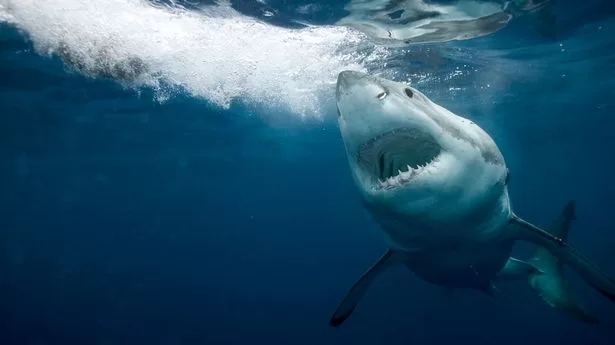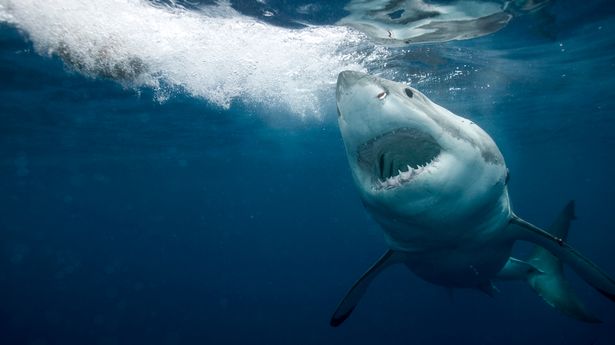Jamaica shark attack: Chilling surge in deaths is all down to innocent error – World News – Mirror Online [data-name=”div-gpt-ad-rh-slot”]”,”sizes”:[[300,600],[300,250],[300,252],[120,600],[160,600],[200,200],[250,250]],”usedInTakeovers”:true,”adFreeEnabled”:true,”relativePos”:”existing”,”name”:”div-gpt-ad-rh-slot”,”type”:”primaryMPU”,”bidders”:{“smartadserver”:{“formatId”:93660,”pageId”:1292169},”mediagrid”:”30442″,”ozone”:”1420431534″,”triplelift”:”Mirror_300x600_Desktop_Prebid”,”xandr”:”20406500″,”verizon”:”8a96947a017474e02ce3e0c6605c012c”,”sovrn”:”792123″,”magnite”:”1872180″,”openx”:”543004052″,”indexexchange”:”593687″,”pubmatic”:”3325567″,”richaudience”:”XewnSIgION”,”improvedigital”:”22433242″,”emx”:”132832″}},{“includeInHeaderBidding”:true,”componentType”:”gpt”,”injectionConditions”:[{“condition”:”stopONAdvertorialContent”},{“condition”:”stopONAffiliateContent”},{“condition”:”stopONActiveLegalProceedings”}],”referenceNode”:”reach-native[data-view=’desktop’] > [data-name=”gpt-native-1″]”,”usedInTakeovers”:false,”relativePos”:”existing”,”type”:”gptNativeArticleSlot1″,”lazyLoad”:false,”targeting”:{“index”:3010,”hivis”:”n”,”opos”:”middle”},”sizes”:[[300,120]],”hideOnSensitiveArticle”:true,”additionalClass”:”native article-rhc”,”name”:”div-gpt-ad-native-article-slot-1″,”flagToEnable”:”gptNativeArticleSlots”},{“includeInHeaderBidding”:true,”componentType”:”gpt”,”injectionConditions”:[{“condition”:”stopONAdvertorialContent”},{“condition”:”stopONAffiliateContent”},{“condition”:”stopONActiveLegalProceedings”}],”referenceNode”:”reach-native[data-view=’desktop’] > [data-name=”gpt-native-2″]”,”usedInTakeovers”:false,”relativePos”:”existing”,”type”:”gptNativeArticleSlot2″,”lazyLoad”:false,”targeting”:{“index”:3011,”hivis”:”n”,”opos”:”middle”},”sizes”:[[300,120]],”hideOnSensitiveArticle”:true,”additionalClass”:”native article-rhc”,”name”:”div-gpt-ad-native-article-slot-2″,”flagToEnable”:”gptNativeArticleSlots”},{“includeInHeaderBidding”:true,”componentType”:”gpt”,”injectionConditions”:[{“condition”:”stopONAdvertorialContent”},{“condition”:”stopONAffiliateContent”},{“condition”:”stopONActiveLegalProceedings”}],”referenceNode”:”reach-native[data-view=’desktop’] > [data-name=”gpt-native-3″]”,”usedInTakeovers”:false,”relativePos”:”existing”,”type”:”gptNativeArticleSlot3″,”lazyLoad”:false,”targeting”:{“index”:3012,”hivis”:”n”,”opos”:”middle”},”sizes”:[[300,120]],”hideOnSensitiveArticle”:true,”additionalClass”:”native article-rhc”,”name”:”div-gpt-ad-native-article-slot-3″,”flagToEnable”:”gptNativeArticleSlots”},{“includeInHeaderBidding”:true,”componentType”:”gpt”,”injectionConditions”:[{“condition”:”stopONAffiliateContent”},{“condition”:”stopONActiveLegalProceedings”},{“condition”:”stopONAdvertorialContent”}],”usedInTakeovers”:true,”referenceNode”:”.article-body > p:nth-of-type(2)”,”relativePos”:”after”,”type”:”VIP”,”targeting”:{“index”:4,”hivis”:”n”,”hbPlacements”:”d-vip”},”sizes”:[[8,8]],”hideOnSensitiveArticle”:true,”additionalClass”:”in-article”,”name”:”div-gpt-ad-vip-slot”,”bidders”:{“ozone”:”1420432300″,”xandr”:”29635855″}},{“includeInHeaderBidding”:true,”componentType”:”gpt”,”targeting”:{“index”:5,”hivis”:”n”,”opos”:”middle”,”mantis_placement”:”standard”,”hbPlacements”:”d-rh2″},”referenceNode”:”[data-view=’desktop’] > [data-name=”div-gpt-ad-rh-secondary-slot”]”,”sizes”:[[300,600],[300,250],[300,253],[120,600],[160,600],[200,200],[250,250]],”usedInTakeovers”:true,”adFreeEnabled”:true,”relativePos”:”existing”,”name”:”div-gpt-ad-rh-secondary-slot”,”type”:”secondaryMPU”,”bidders”:{“smartadserver”:{“formatId”:93661,”pageId”:1292169},”mediagrid”:”30441″,”ozone”:”1420431533″,”triplelift”:”Mirror_300x600_Desktop_Prebid”,”xandr”:”20406501″,”verizon”:”8a9699d4017474e03107e0c6618002ea”,”sovrn”:”792124″,”magnite”:”1872182″,”openx”:”543004056″,”indexexchange”:”593688″,”pubmatic”:”3325568″,”richaudience”:”5BLXDZFtWM”,”improvedigital”:”22433241″,”emx”:”132831″}},{“includeInHeaderBidding”:true,”componentType”:”gpt”,”targeting”:{“index”:7,”hivis”:”n”,”opos”:”middle”,”mantis_placement”:”basic”,”hbPlacements”:”d-rho”},”referenceNode”:”[data-view=’desktop’] > [data-name=”div-gpt-ad-rh-tertiary-slot”]”,”sizes”:[[300,600],[300,250],[300,255],[120,600],[160,600],[200,200],[250,250]],”usedInTakeovers”:true,”relativePos”:”existing”,”name”:”div-gpt-ad-rh-tertiary-slot”,”type”:”tertiaryMPU”,”bidders”:{“smartadserver”:{“formatId”:93662,”pageId”:1292169},”mediagrid”:”30440″,”ozone”:”1420431532″,”triplelift”:”Mirror_300x600_Desktop_Prebid”,”xandr”:”20406503″,”verizon”:”8a969086017474e02915e0c6629901f1″,”sovrn”:”792125″,”magnite”:”1872184″,”openx”:”543004061″,”indexexchange”:”593689″,”pubmatic”:”3325569″,”richaudience”:”VUFLlDNTk3″,”improvedigital”:”22433240″,”emx”:”132830″}},{“includeInHeaderBidding”:true,”componentType”:”gpt”,”targeting”:{“index”:8,”hivis”:”n”,”opos”:”bottom”,”mantis_placement”:”basic”,”hbPlacements”:”d-rho”},”referenceNode”:”[data-view=’desktop’] > [data-name=”div-gpt-ad-rh-quaternary-slot”]”,”sizes”:[[300,600],[300,250],[300,256],[120,600],[160,600],[200,200],[250,250]],”usedInTakeovers”:true,”relativePos”:”existing”,”name”:”div-gpt-ad-rh-quaternary-slot”,”type”:”quaternaryMPU”,”bidders”:{“smartadserver”:{“formatId”:93662,”pageId”:1292169},”mediagrid”:”30440″,”ozone”:”1420431532″,”triplelift”:”Mirror_300x600_Desktop_Prebid”,”xandr”:”20406503″,”verizon”:”8a969086017474e02915e0c6629901f1″,”sovrn”:”792125″,”magnite”:”1872184″,”openx”:”543004061″,”indexexchange”:”593689″,”pubmatic”:”3325569″,”richaudience”:”VUFLlDNTk3″,”improvedigital”:”22433240″,”emx”:”132830″}},{“includeInHeaderBidding”:true,”componentType”:”gpt”,”targeting”:{“index”:6,”hivis”:”n”,”opos”:”middle”,”mantis_placement”:”standard”,”hbPlacements”:”d-art1″},”sizes”:[[300,250],[300,254],[200,200],[250,250]],”usedInTakeovers”:true,”hideOnSensitiveArticle”:true,”additionalClass”:”in-article”,”name”:”div-gpt-ad-in-article-slot”,”positions”:[{“referenceNode”:”.article-body > p:nth-last-of-type(4)”,”relativePos”:”after”,”conditionNode”:”.article-body > p:nth-of-type(8)”}],”type”:”inArticleMPU6″,”bidders”:{“smartadserver”:{“formatId”:93663,”pageId”:1292173},”mediagrid”:”30437″,”ozone”:”1420431535″,”triplelift”:”Mirror_300x250_In-Article_Desktop_Prebid”,”xandr”:”20406504″,”verizon”:”8a96947a017474e02ce3e0c663bd012d”,”sovrn”:”792126″,”magnite”:”1872186″,”openx”:”543004065″,”indexexchange”:”593690″,”pubmatic”:”3325570″,”richaudience”:”d2SFbhEoaC”,”improvedigital”:”22433243″,”emx”:”132833″}},{“includeInHeaderBidding”:true,”componentType”:”gpt”,”targeting”:{“index”:9,”hivis”:”n”,”opos”:”bottom”,”mantis_placement”:”basic”,”hbPlacements”:”d-bot”},”referenceNode”:”reach-billboard > [data-name=”div-gpt-ad-bottom-slot”]”,”sizes”:[[970,250],[970,259],[728,90],[728,98],[728,99],[970,90],[960,90],[960,250],[300,250]],”usedInTakeovers”:true,”relativePos”:”existing”,”additionalClass”:”bottom-ad-slot”,”name”:”div-gpt-ad-bottom-slot”,”type”:”bottomOfPage”,”bidders”:{“smartadserver”:{“formatId”:93657,”pageId”:1292169},”mediagrid”:”30433″,”ozone”:”1420431538″,”triplelift”:”Mirror_970x250_Desktop_Prebid”,”xandr”:”20406496″,”verizon”:”8a96947a017474e02ce3e0c65cf8012b”,”sovrn”:”792120″,”magnite”:”1872174″,”openx”:”543004071″,”indexexchange”:”593684″,”pubmatic”:”3325564″,”richaudience”:”3afJpJZeuQ”,”improvedigital”:”22433246″,”emx”:”132836″}},{“includeInHeaderBidding”:true,”deferred”:{“injectionEvent”:”inject.sureview.slots”,”injectCompleteEvent”:”deferred.ads.injection.complete”,”repeat”:false},”componentType”:”gpt”,”targeting”:{“hivis”:”y”,”opos”:”left”,”mantis_placement”:”premium”,”hbPlacements”:”d-gut”},”referenceNode”:”reach-gutter > [data-name=”div-gpt-ad-sureview-left-slot”]”,”sizes”:[[120,600],[300,250],[300,600]],”relativePos”:”existing”,”name”:”div-gpt-ad-sureview-left-slot”,”type”:”sureviewLeft”,”sizeMapping”:[[[1600,0],[[120,600],[300,250],[300,600]]],[[0,0],[[120,600]]]],”bidders”:{“smartadserver”:{“formatId”:93667,”pageId”:1292169},”mediagrid”:”30436″,”ozone”:”1420431531″,”triplelift”:”hdx_generic_trinitymirror_Prebid”,”xandr”:”20406508″,”verizon”:”8a96947a017474e02ce3e0c66717012e”,”sovrn”:”792129″,”magnite”:”1872192″,”openx”:”543004077″,”indexexchange”:”593693″,”pubmatic”:”3325573″,”richaudience”:”VWvSXNt0x9″,”improvedigital”:”22433239″,”emx”:”132829″}},{“includeInHeaderBidding”:true,”deferred”:{“injectionEvent”:”inject.sureview.slots”,”injectCompleteEvent”:”deferred.ads.injection.complete”,”repeat”:false},”componentType”:”gpt”,”targeting”:{“hivis”:”y”,”opos”:”right”,”mantis_placement”:”premium”,”hbPlacements”:”d-gut”},”referenceNode”:”reach-gutter > [data-name=”div-gpt-ad-sureview-right-slot”]”,”sizes”:[[120,600],[300,250],[300,600]],”relativePos”:”existing”,”name”:”div-gpt-ad-sureview-right-slot”,”type”:”sureviewRight”,”sizeMapping”:[[[1600,0],[[120,600],[300,250],[300,600]]],[[0,0],[[120,600]]]],”bidders”:{“smartadserver”:{“formatId”:93667,”pageId”:1292169},”mediagrid”:”30436″,”ozone”:”1420431531″,”triplelift”:”hdx_generic_trinitymirror_Prebid”,”xandr”:”20406508″,”verizon”:”8a96947a017474e02ce3e0c66717012e”,”sovrn”:”792129″,”magnite”:”1872192″,”openx”:”543004077″,”indexexchange”:”593693″,”pubmatic”:”3325573″,”richaudience”:”VWvSXNt0x9″,”improvedigital”:”22433239″,”emx”:”132829″}},{“deferred”:{“injectionEvent”:”gpt.first.slot.load”,”injectCompleteEvent”:”deferred.ads.injection.complete”,”repeat”:false},”componentType”:”gpt”,”targeting”:{},”referenceNode”:”footer”,”sizes”:[[3,3]],”relativePos”:”after”,”additionalClass”:”hidden”,”name”:”div-gpt-ad-fpd”,”type”:”firstPartyData”},{“includeInHeaderBidding”:false,”deferred”:{“injectionEvent”:”mr-primary-slots-created”,”injectCompleteEvent”:”deferred.ads.injection.complete”,”repeat”:false},”componentType”:”gpt”,”targeting”:{“index”:1301,”hivis”:”n”},”referenceNode”:”#div-gpt-ad-mantis-carousel-partner-1″,”sizes”:[[10,10]],”relativePos”:”existing”,”name”:”div-gpt-ad-mantis-carousel-partner-1″,”type”:”mantisCarouselPartner”,”enabled”:false},{“includeInHeaderBidding”:true,”deferred”:{“injectionEvent”:”mr-primary-slots-created”,”injectCompleteEvent”:”deferred.ads.injection.complete”,”repeat”:false},”componentType”:”gpt”,”targeting”:{“index”:1101,”hivis”:”n”,”mantis_placement”:”basic”,”hbPlacements”:”mr-lb”},”sizes”:[[320,100],[320,50],[300,100],[300,50]],”referenceNode”:”#div-gpt-ad-mantis-carousel-lb-1″,”relativePos”:”existing”,”name”:”div-gpt-ad-mantis-carousel-lb-1″,”type”:”mantisCarouselLB”,”enabled”:false,”bidders”:{“smartadserver”:{“formatId”:110328,”pageId”:1550823},”mediagrid”:”30450″,”ozone”:”1420434829″,”triplelift”:”Mirror_300x250_Mobile_Prebid”,”xandr”:”24417631″,”verizon”:”8a969086017474e02915e0c66f9901f5″,”sovrn”:”792137″,”openx”:”556690870″,”indexexchange”:”786119″,”pubmatic”:”4341811″,”richaudience”:”4sL00hrdYj”,”improvedigital”:”22433256″,”emx”:”132846″}},{“includeInHeaderBidding”:true,”deferred”:{“injectionEvent”:”mr-secondary-slots-created”,”injectCompleteEvent”:”deferred.ads.injection.complete”,”repeat”:false},”componentType”:”gpt”,”targeting”:{“index”:1102,”hivis”:”n”,”mantis_placement”:”basic”,”hbPlacements”:”mr-lb”},”sizes”:[[320,100],[320,50],[300,100],[300,50]],”referenceNode”:”#div-gpt-ad-mantis-carousel-lb-2″,”relativePos”:”existing”,”name”:”div-gpt-ad-mantis-carousel-lb-2″,”type”:”mantisCarouselLB”,”enabled”:false,”bidders”:{“smartadserver”:{“formatId”:110328,”pageId”:1550823},”mediagrid”:”30450″,”ozone”:”1420434829″,”triplelift”:”Mirror_300x250_Mobile_Prebid”,”xandr”:”24417631″,”verizon”:”8a969086017474e02915e0c66f9901f5″,”sovrn”:”792137″,”openx”:”556690870″,”indexexchange”:”786119″,”pubmatic”:”4341811″,”richaudience”:”4sL00hrdYj”,”improvedigital”:”22433256″,”emx”:”132846″}},{“includeInHeaderBidding”:true,”deferred”:{“injectionEvent”:”mr-secondary-slots-created”,”injectCompleteEvent”:”deferred.ads.injection.complete”,”repeat”:false},”componentType”:”gpt”,”targeting”:{“index”:1103,”hivis”:”n”,”mantis_placement”:”basic”,”hbPlacements”:”mr-lb”},”sizes”:[[320,100],[320,50],[300,100],[300,50]],”referenceNode”:”#div-gpt-ad-mantis-carousel-lb-3″,”relativePos”:”existing”,”name”:”div-gpt-ad-mantis-carousel-lb-3″,”type”:”mantisCarouselLB”,”enabled”:false,”bidders”:{“smartadserver”:{“formatId”:110328,”pageId”:1550823},”mediagrid”:”30450″,”ozone”:”1420434829″,”triplelift”:”Mirror_300x250_Mobile_Prebid”,”xandr”:”24417631″,”verizon”:”8a969086017474e02915e0c66f9901f5″,”sovrn”:”792137″,”openx”:”556690870″,”indexexchange”:”786119″,”pubmatic”:”4341811″,”richaudience”:”4sL00hrdYj”,”improvedigital”:”22433256″,”emx”:”132846″}},{“includeInHeaderBidding”:true,”deferred”:{“injectionEvent”:”mr-secondary-slots-created”,”injectCompleteEvent”:”deferred.ads.injection.complete”,”repeat”:false},”componentType”:”gpt”,”targeting”:{“index”:1104,”hivis”:”n”,”mantis_placement”:”basic”,”hbPlacements”:”mr-lb”},”sizes”:[[320,100],[320,50],[300,100],[300,50]],”referenceNode”:”#div-gpt-ad-mantis-carousel-lb-4″,”relativePos”:”existing”,”name”:”div-gpt-ad-mantis-carousel-lb-4″,”type”:”mantisCarouselLB”,”enabled”:false,”bidders”:{“smartadserver”:{“formatId”:110328,”pageId”:1550823},”mediagrid”:”30450″,”ozone”:”1420434829″,”triplelift”:”Mirror_300x250_Mobile_Prebid”,”xandr”:”24417631″,”verizon”:”8a969086017474e02915e0c66f9901f5″,”sovrn”:”792137″,”openx”:”556690870″,”indexexchange”:”786119″,”pubmatic”:”4341811″,”richaudience”:”4sL00hrdYj”,”improvedigital”:”22433256″,”emx”:”132846″}},{“includeInHeaderBidding”:true,”deferred”:{“injectionEvent”:”mr-primary-slots-created”,”injectCompleteEvent”:”deferred.ads.injection.complete”,”repeat”:false},”componentType”:”gpt”,”targeting”:{“index”:1003,”hivis”:”n”,”mantis_placement”:”basic”,”hbPlacements”:”mr-mpu”},”sizes”:[[300,250],[200,200],[250,250]],”referenceNode”:”#div-gpt-ad-mantis-carousel-mpu-1″,”relativePos”:”existing”,”name”:”div-gpt-ad-mantis-carousel-mpu-1″,”type”:”mantisCarouselMPU”,”enabled”:false,”bidders”:{“smartadserver”:{“formatId”:110329,”pageId”:1550824},”mediagrid”:”30449″,”ozone”:”1420434830″,”triplelift”:”Mirror_300x250_Mobile_Prebid”,”xandr”:”24417632″,”verizon”:”8a96947a017474e02ce3e0c66d700130″,”sovrn”:”792135″,”openx”:”556690872″,”indexexchange”:”786120″,”pubmatic”:”4341812″,”richaudience”:”Kcb7wEeNWN”,”improvedigital”:”22433254″,”emx”:”132844″}},{“includeInHeaderBidding”:true,”deferred”:{“injectionEvent”:”mr-primary-slots-created”,”injectCompleteEvent”:”deferred.ads.injection.complete”,”repeat”:false},”componentType”:”gpt”,”targeting”:{“index”:1006,”hivis”:”n”,”mantis_placement”:”basic”,”hbPlacements”:”mr-mpu”},”sizes”:[[300,250],[200,200],[250,250]],”referenceNode”:”#div-gpt-ad-mantis-carousel-mpu-2″,”relativePos”:”existing”,”name”:”div-gpt-ad-mantis-carousel-mpu-2″,”type”:”mantisCarouselMPU”,”enabled”:false,”bidders”:{“smartadserver”:{“formatId”:110329,”pageId”:1550824},”mediagrid”:”30449″,”ozone”:”1420434830″,”triplelift”:”Mirror_300x250_Mobile_Prebid”,”xandr”:”24417632″,”verizon”:”8a96947a017474e02ce3e0c66d700130″,”sovrn”:”792135″,”openx”:”556690872″,”indexexchange”:”786120″,”pubmatic”:”4341812″,”richaudience”:”Kcb7wEeNWN”,”improvedigital”:”22433254″,”emx”:”132844″}},{“includeInHeaderBidding”:true,”deferred”:{“injectionEvent”:”mr-secondary-slots-created”,”injectCompleteEvent”:”deferred.ads.injection.complete”,”repeat”:false},”componentType”:”gpt”,”targeting”:{“index”:1009,”hivis”:”n”,”mantis_placement”:”basic”,”hbPlacements”:”mr-mpu”},”sizes”:[[300,250],[200,200],[250,250]],”referenceNode”:”#div-gpt-ad-mantis-carousel-mpu-3″,”relativePos”:”existing”,”name”:”div-gpt-ad-mantis-carousel-mpu-3″,”type”:”mantisCarouselMPU”,”enabled”:false,”bidders”:{“smartadserver”:{“formatId”:110329,”pageId”:1550824},”mediagrid”:”30449″,”ozone”:”1420434830″,”triplelift”:”Mirror_300x250_Mobile_Prebid”,”xandr”:”24417632″,”verizon”:”8a96947a017474e02ce3e0c66d700130″,”sovrn”:”792135″,”openx”:”556690872″,”indexexchange”:”786120″,”pubmatic”:”4341812″,”richaudience”:”Kcb7wEeNWN”,”improvedigital”:”22433254″,”emx”:”132844″}},{“includeInHeaderBidding”:true,”deferred”:{“injectionEvent”:”mr-secondary-slots-created”,”injectCompleteEvent”:”deferred.ads.injection.complete”,”repeat”:false},”componentType”:”gpt”,”targeting”:{“index”:1012,”hivis”:”n”,”mantis_placement”:”basic”,”hbPlacements”:”mr-mpu”},”sizes”:[[300,250],[200,200],[250,250]],”referenceNode”:”#div-gpt-ad-mantis-carousel-mpu-4″,”relativePos”:”existing”,”name”:”div-gpt-ad-mantis-carousel-mpu-4″,”type”:”mantisCarouselMPU”,”enabled”:false,”bidders”:{“smartadserver”:{“formatId”:110329,”pageId”:1550824},”mediagrid”:”30449″,”ozone”:”1420434830″,”triplelift”:”Mirror_300x250_Mobile_Prebid”,”xandr”:”24417632″,”verizon”:”8a96947a017474e02ce3e0c66d700130″,”sovrn”:”792135″,”openx”:”556690872″,”indexexchange”:”786120″,”pubmatic”:”4341812″,”richaudience”:”Kcb7wEeNWN”,”improvedigital”:”22433254″,”emx”:”132844″}},{“includeInHeaderBidding”:true,”deferred”:{“injectionEvent”:”mr-secondary-slots-created”,”injectCompleteEvent”:”deferred.ads.injection.complete”,”repeat”:false},”componentType”:”gpt”,”targeting”:{“index”:1015,”hivis”:”n”,”mantis_placement”:”basic”,”hbPlacements”:”mr-mpu”},”sizes”:[[300,250],[200,200],[250,250]],”referenceNode”:”#div-gpt-ad-mantis-carousel-mpu-5″,”relativePos”:”existing”,”name”:”div-gpt-ad-mantis-carousel-mpu-5″,”type”:”mantisCarouselMPU”,”enabled”:false,”bidders”:{“smartadserver”:{“formatId”:110329,”pageId”:1550824},”mediagrid”:”30449″,”ozone”:”1420434830″,”triplelift”:”Mirror_300x250_Mobile_Prebid”,”xandr”:”24417632″,”verizon”:”8a96947a017474e02ce3e0c66d700130″,”sovrn”:”792135″,”openx”:”556690872″,”indexexchange”:”786120″,”pubmatic”:”4341812″,”richaudience”:”Kcb7wEeNWN”,”improvedigital”:”22433254″,”emx”:”132844″}},{“includeInHeaderBidding”:true,”deferred”:{“injectionEvent”:”mr-secondary-slots-created”,”injectCompleteEvent”:”deferred.ads.injection.complete”,”repeat”:false},”componentType”:”gpt”,”targeting”:{“index”:1018,”hivis”:”n”,”mantis_placement”:”basic”,”hbPlacements”:”mr-mpu”},”sizes”:[[300,250],[200,200],[250,250]],”referenceNode”:”#div-gpt-ad-mantis-carousel-mpu-6″,”relativePos”:”existing”,”name”:”div-gpt-ad-mantis-carousel-mpu-6″,”type”:”mantisCarouselMPU”,”enabled”:false,”bidders”:{“smartadserver”:{“formatId”:110329,”pageId”:1550824},”mediagrid”:”30449″,”ozone”:”1420434830″,”triplelift”:”Mirror_300x250_Mobile_Prebid”,”xandr”:”24417632″,”verizon”:”8a96947a017474e02ce3e0c66d700130″,”sovrn”:”792135″,”openx”:”556690872″,”indexexchange”:”786120″,”pubmatic”:”4341812″,”richaudience”:”Kcb7wEeNWN”,”improvedigital”:”22433254″,”emx”:”132844″}},{“includeInHeaderBidding”:true,”deferred”:{“injectionEvent”:”mr-secondary-slots-created”,”injectCompleteEvent”:”deferred.ads.injection.complete”,”repeat”:false},”componentType”:”gpt”,”targeting”:{“index”:1021,”hivis”:”n”,”mantis_placement”:”basic”,”hbPlacements”:”mr-mpu”},”sizes”:[[300,250],[200,200],[250,250]],”referenceNode”:”#div-gpt-ad-mantis-carousel-mpu-7″,”relativePos”:”existing”,”name”:”div-gpt-ad-mantis-carousel-mpu-7″,”type”:”mantisCarouselMPU”,”enabled”:false,”bidders”:{“smartadserver”:{“formatId”:110329,”pageId”:1550824},”mediagrid”:”30449″,”ozone”:”1420434830″,”triplelift”:”Mirror_300x250_Mobile_Prebid”,”xandr”:”24417632″,”verizon”:”8a96947a017474e02ce3e0c66d700130″,”sovrn”:”792135″,”openx”:”556690872″,”indexexchange”:”786120″,”pubmatic”:”4341812″,”richaudience”:”Kcb7wEeNWN”,”improvedigital”:”22433254″,”emx”:”132844″}},{“includeInHeaderBidding”:true,”deferred”:{“injectionEvent”:”mr-secondary-slots-created”,”injectCompleteEvent”:”deferred.ads.injection.complete”,”repeat”:false},”componentType”:”gpt”,”targeting”:{“index”:1024,”hivis”:”n”,”mantis_placement”:”basic”,”hbPlacements”:”mr-mpu”},”sizes”:[[300,250],[200,200],[250,250]],”referenceNode”:”#div-gpt-ad-mantis-carousel-mpu-8″,”relativePos”:”existing”,”name”:”div-gpt-ad-mantis-carousel-mpu-8″,”type”:”mantisCarouselMPU”,”enabled”:false,”bidders”:{“smartadserver”:{“formatId”:110329,”pageId”:1550824},”mediagrid”:”30449″,”ozone”:”1420434830″,”triplelift”:”Mirror_300x250_Mobile_Prebid”,”xandr”:”24417632″,”verizon”:”8a96947a017474e02ce3e0c66d700130″,”sovrn”:”792135″,”openx”:”556690872″,”indexexchange”:”786120″,”pubmatic”:”4341812″,”richaudience”:”Kcb7wEeNWN”,”improvedigital”:”22433254″,”emx”:”132844″}},{“includeInHeaderBidding”:true,”deferred”:{“injectionEvent”:”mr-secondary-slots-created”,”injectCompleteEvent”:”deferred.ads.injection.complete”,”repeat”:false},”componentType”:”gpt”,”targeting”:{“index”:1027,”hivis”:”n”,”mantis_placement”:”basic”,”hbPlacements”:”mr-mpu”},”sizes”:[[300,250],[200,200],[250,250]],”referenceNode”:”#div-gpt-ad-mantis-carousel-mpu-9″,”relativePos”:”existing”,”name”:”div-gpt-ad-mantis-carousel-mpu-9″,”type”:”mantisCarouselMPU”,”enabled”:false,”bidders”:{“smartadserver”:{“formatId”:110329,”pageId”:1550824},”mediagrid”:”30449″,”ozone”:”1420434830″,”triplelift”:”Mirror_300x250_Mobile_Prebid”,”xandr”:”24417632″,”verizon”:”8a96947a017474e02ce3e0c66d700130″,”sovrn”:”792135″,”openx”:”556690872″,”indexexchange”:”786120″,”pubmatic”:”4341812″,”richaudience”:”Kcb7wEeNWN”,”improvedigital”:”22433254″,”emx”:”132844″}},{“includeInHeaderBidding”:true,”deferred”:{“injectionEvent”:”mr-secondary-slots-created”,”injectCompleteEvent”:”deferred.ads.injection.complete”,”repeat”:false},”componentType”:”gpt”,”targeting”:{“index”:1030,”hivis”:”n”,”mantis_placement”:”basic”,”hbPlacements”:”mr-mpu”},”sizes”:[[300,250],[200,200],[250,250]],”referenceNode”:”#div-gpt-ad-mantis-carousel-mpu-10″,”relativePos”:”existing”,”name”:”div-gpt-ad-mantis-carousel-mpu-10″,”type”:”mantisCarouselMPU”,”enabled”:false,”bidders”:{“smartadserver”:{“formatId”:110329,”pageId”:1550824},”mediagrid”:”30449″,”ozone”:”1420434830″,”triplelift”:”Mirror_300x250_Mobile_Prebid”,”xandr”:”24417632″,”verizon”:”8a96947a017474e02ce3e0c66d700130″,”sovrn”:”792135″,”openx”:”556690872″,”indexexchange”:”786120″,”pubmatic”:”4341812″,”richaudience”:”Kcb7wEeNWN”,”improvedigital”:”22433254″,”emx”:”132844″}},{“includeInHeaderBidding”:false,”deferred”:{“injectionEvent”:”mr-rhc-slots-created”,”injectCompleteEvent”:”deferred.ads.injection.complete”,”repeat”:false},”componentType”:”gpt”,”targeting”:{“index”:1201,”hivis”:”n”,”mantis_placement”:”basic”,”hbPlacements”:”mr-rhc-mpu”},”sizes”:[[300,250],[200,200],[250,250]],”referenceNode”:”#div-gpt-ad-mantis-carousel-rhc-1″,”relativePos”:”existing”,”name”:”div-gpt-ad-mantis-carousel-rhc-1″,”type”:”mantisCarouselRHC”,”enabled”:false,”bidders”:{“emx”:”132628″,”improvedigital”:”22433037″,”indexexchange”:”786122″,”mediagrid”:”29792″,”openx”:”556690889″,”ozone”:”1420434848″,”pubmatic”:”4341830″,”richaudience”:”MP_Kplo2PTRsd_mpu”,”smartadserver”:{“formatId”:110329,”pageId”:1550822},”sovrn”:”792195″,”triplelift”:”RON_300x250_Mobile_Prebid”,”verizon”:”8a9699d4017474e03107e0c00a7e0039″,”xandr”:”24417656″}},{“includeInHeaderBidding”:false,”deferred”:{“injectionEvent”:”mr-rhc-slots-created”,”injectCompleteEvent”:”deferred.ads.injection.complete”,”repeat”:false},”componentType”:”gpt”,”targeting”:{“index”:1202,”hivis”:”n”,”mantis_placement”:”basic”,”hbPlacements”:”mr-rhc-mpu”},”sizes”:[[300,250],[200,200],[250,250]],”referenceNode”:”#div-gpt-ad-mantis-carousel-rhc-2″,”relativePos”:”existing”,”name”:”div-gpt-ad-mantis-carousel-rhc-2″,”type”:”mantisCarouselRHC”,”enabled”:false,”bidders”:{“emx”:”132628″,”improvedigital”:”22433037″,”indexexchange”:”786122″,”mediagrid”:”29792″,”openx”:”556690889″,”ozone”:”1420434848″,”pubmatic”:”4341830″,”richaudience”:”MP_Kplo2PTRsd_mpu”,”smartadserver”:{“formatId”:110329,”pageId”:1550822},”sovrn”:”792195″,”triplelift”:”RON_300x250_Mobile_Prebid”,”verizon”:”8a9699d4017474e03107e0c00a7e0039″,”xandr”:”24417656″}},{“includeInHeaderBidding”:false,”deferred”:{“injectionEvent”:”md-primary-slots-created”,”injectCompleteEvent”:”deferred.ads.injection.complete”,”repeat”:false},”componentType”:”gpt”,”targeting”:{“index”:1401,”hivis”:”n”,”mantis_placement”:”basic”,”hbPlacements”:”md-lb-1″},”sizes”:[[320,100],[320,50],[300,100],[300,50]],”referenceNode”:”#div-gpt-ad-mantis-discrete-lb-1″,”relativePos”:”existing”,”name”:”div-gpt-ad-mantis-discrete-lb-1″,”type”:”mantisDiscreteLB”,”enabled”:false,”bidders”:{“xandr”:”28814377″,”indexexchange”:”938912″,”ozone”:”3500009017″,”improvedigital”:”22916570″,”richaudience”:”6eQuvysFnw”}},{“includeInHeaderBidding”:false,”deferred”:{“injectionEvent”:”md-secondary-slots-created”,”injectCompleteEvent”:”deferred.ads.injection.complete”,”repeat”:false},”componentType”:”gpt”,”targeting”:{“index”:1402,”hivis”:”n”,”mantis_placement”:”basic”,”hbPlacements”:”md-lb-other”},”sizes”:[[320,100],[320,50],[300,100],[300,50]],”referenceNode”:”#div-gpt-ad-mantis-discrete-lb-2″,”relativePos”:”existing”,”name”:”div-gpt-ad-mantis-discrete-lb-2″,”type”:”mantisDiscreteLB”,”enabled”:false,”bidders”:{“xandr”:”28814378″,”indexexchange”:”938913″,”ozone”:”3500009018″,”improvedigital”:”22916571″,”richaudience”:”DaItorI17I”}},{“includeInHeaderBidding”:false,”deferred”:{“injectionEvent”:”md-secondary-slots-created”,”injectCompleteEvent”:”deferred.ads.injection.complete”,”repeat”:false},”componentType”:”gpt”,”targeting”:{“index”:1403,”hivis”:”n”,”mantis_placement”:”basic”,”hbPlacements”:”md-lb-other”},”sizes”:[[320,100],[320,50],[300,100],[300,50]],”referenceNode”:”#div-gpt-ad-mantis-discrete-lb-3″,”relativePos”:”existing”,”name”:”div-gpt-ad-mantis-discrete-lb-3″,”type”:”mantisDiscreteLB”,”enabled”:false,”bidders”:{“xandr”:”28814378″,”indexexchange”:”938913″,”ozone”:”3500009018″,”improvedigital”:”22916571″,”richaudience”:”DaItorI17I”}},{“includeInHeaderBidding”:false,”deferred”:{“injectionEvent”:”md-secondary-slots-created”,”injectCompleteEvent”:”deferred.ads.injection.complete”,”repeat”:false},”componentType”:”gpt”,”targeting”:{“index”:1404,”hivis”:”n”,”mantis_placement”:”basic”,”hbPlacements”:”md-lb-other”},”sizes”:[[320,100],[320,50],[300,100],[300,50]],”referenceNode”:”#div-gpt-ad-mantis-discrete-lb-4″,”relativePos”:”existing”,”name”:”div-gpt-ad-mantis-discrete-lb-4″,”type”:”mantisDiscreteLB”,”enabled”:false,”bidders”:{“xandr”:”28814378″,”indexexchange”:”938913″,”ozone”:”3500009018″,”improvedigital”:”22916571″,”richaudience”:”DaItorI17I”}},{“includeInHeaderBidding”:false,”deferred”:{“injectionEvent”:”md-secondary-slots-created”,”injectCompleteEvent”:”deferred.ads.injection.complete”,”repeat”:false},”componentType”:”gpt”,”targeting”:{“index”:1405,”hivis”:”n”,”mantis_placement”:”basic”,”hbPlacements”:”md-lb-other”},”sizes”:[[320,100],[320,50],[300,100],[300,50]],”referenceNode”:”#div-gpt-ad-mantis-discrete-lb-5″,”relativePos”:”existing”,”name”:”div-gpt-ad-mantis-discrete-lb-5″,”type”:”mantisDiscreteLB”,”enabled”:false,”bidders”:{“xandr”:”28814378″,”indexexchange”:”938913″,”ozone”:”3500009018″,”improvedigital”:”22916571″,”richaudience”:”DaItorI17I”}},{“includeInHeaderBidding”:false,”deferred”:{“injectionEvent”:”md-secondary-slots-created”,”injectCompleteEvent”:”deferred.ads.injection.complete”,”repeat”:false},”componentType”:”gpt”,”targeting”:{“index”:1406,”hivis”:”n”,”mantis_placement”:”basic”,”hbPlacements”:”md-lb-other”},”sizes”:[[320,100],[320,50],[300,100],[300,50]],”referenceNode”:”#div-gpt-ad-mantis-discrete-lb-6″,”relativePos”:”existing”,”name”:”div-gpt-ad-mantis-discrete-lb-6″,”type”:”mantisDiscreteLB”,”enabled”:false,”bidders”:{“xandr”:”28814378″,”indexexchange”:”938913″,”ozone”:”3500009018″,”improvedigital”:”22916571″,”richaudience”:”DaItorI17I”}},{“includeInHeaderBidding”:false,”deferred”:{“injectionEvent”:”md-secondary-slots-created”,”injectCompleteEvent”:”deferred.ads.injection.complete”,”repeat”:false},”componentType”:”gpt”,”targeting”:{“index”:1407,”hivis”:”n”,”mantis_placement”:”basic”,”hbPlacements”:”md-lb-other”},”sizes”:[[320,100],[320,50],[300,100],[300,50]],”referenceNode”:”#div-gpt-ad-mantis-discrete-lb-7″,”relativePos”:”existing”,”name”:”div-gpt-ad-mantis-discrete-lb-7″,”type”:”mantisDiscreteLB”,”enabled”:false,”bidders”:{“xandr”:”28814378″,”indexexchange”:”938913″,”ozone”:”3500009018″,”improvedigital”:”22916571″,”richaudience”:”DaItorI17I”}},{“includeInHeaderBidding”:false,”deferred”:{“injectionEvent”:”md-secondary-slots-created”,”injectCompleteEvent”:”deferred.ads.injection.complete”,”repeat”:false},”componentType”:”gpt”,”targeting”:{“index”:1408,”hivis”:”n”,”mantis_placement”:”basic”,”hbPlacements”:”md-lb-other”},”sizes”:[[320,100],[320,50],[300,100],[300,50]],”referenceNode”:”#div-gpt-ad-mantis-discrete-lb-8″,”relativePos”:”existing”,”name”:”div-gpt-ad-mantis-discrete-lb-8″,”type”:”mantisDiscreteLB”,”enabled”:false,”bidders”:{“xandr”:”28814378″,”indexexchange”:”938913″,”ozone”:”3500009018″,”improvedigital”:”22916571″,”richaudience”:”DaItorI17I”}},{“includeInHeaderBidding”:false,”deferred”:{“injectionEvent”:”md-secondary-slots-created”,”injectCompleteEvent”:”deferred.ads.injection.complete”,”repeat”:false},”componentType”:”gpt”,”targeting”:{“index”:1409,”hivis”:”n”,”mantis_placement”:”basic”,”hbPlacements”:”md-lb-other”},”sizes”:[[320,100],[320,50],[300,100],[300,50]],”referenceNode”:”#div-gpt-ad-mantis-discrete-lb-9″,”relativePos”:”existing”,”name”:”div-gpt-ad-mantis-discrete-lb-9″,”type”:”mantisDiscreteLB”,”enabled”:false,”bidders”:{“xandr”:”28814378″,”indexexchange”:”938913″,”ozone”:”3500009018″,”improvedigital”:”22916571″,”richaudience”:”DaItorI17I”}},{“includeInHeaderBidding”:false,”deferred”:{“injectionEvent”:”md-secondary-slots-created”,”injectCompleteEvent”:”deferred.ads.injection.complete”,”repeat”:false},”componentType”:”gpt”,”targeting”:{“index”:1410,”hivis”:”n”,”mantis_placement”:”basic”,”hbPlacements”:”md-lb-other”},”sizes”:[[320,100],[320,50],[300,100],[300,50]],”referenceNode”:”#div-gpt-ad-mantis-discrete-lb-10″,”relativePos”:”existing”,”name”:”div-gpt-ad-mantis-discrete-lb-10″,”type”:”mantisDiscreteLB”,”enabled”:false,”bidders”:{“xandr”:”28814378″,”indexexchange”:”938913″,”ozone”:”3500009018″,”improvedigital”:”22916571″,”richaudience”:”DaItorI17I”}},{“mode”:”thumbnails-feed”,”componentType”:”taboola”,”injectionConditions”:[{“condition”:”stopONActiveLegalProceedings”}],”slotType”:”taboola”,”referenceNode”:”reach-taboola > [data-name=”taboolaBelowArticle”]”,”hideOnSensitiveArticle”:true,”relativePos”:”existing”,”name”:”taboolaBelowArticle”,”selector”:”taboola-below-article-thumbnails”,”targetType”:”mix”,”placement”:”Dragonfly Below Article Thumbnails Responsive Feed”,”type”:”taboolaBelowArticleThumbnails”},{“mode”:”thumbnails-e”,”componentType”:”taboola”,”injectionConditions”:[{“condition”:”stopONActiveLegalProceedings”}],”slotType”:”taboola”,”referenceNode”:”reach-taboola > [data-name=”taboolaRightRailsResponsive”]”,”hideOnSensitiveArticle”:true,”relativePos”:”existing”,”name”:”taboolaRightRailsResponsive”,”selector”:”taboola-right-rail-thumbnails-responsive”,”targetType”:”mix”,”placement”:”Dragonfly Right Rail Thumbnails Responsive”,”type”:”taboolaRightRailsThumbnails”},{“componentType”:”taboola”,”injectionConditions”:[{“condition”:”stopONAdvertorialContent”},{“condition”:”stopONAffiliateContent”},{“condition”:”stopONActiveLegalProceedings”}],”slotType”:”taboola”,”referenceNode”:”.article-body > p:nth-of-type(8)”,”relativePos”:”after”,”targetType”:”mix”,”type”:”taboolaDesktopMidArticleThumbnails”,”mode”:”thumbnails-mm”,”hideOnSensitiveArticle”:true,”additionalClass”:”taboola-mid-article-size”,”name”:”taboolaMidArticle”,”selector”:”taboola-mid-article-thumbnails”,”placement”:”Dragonfly Mid Article Thumbnails”},{“deferred”:{“injectionEvent”:”ayl.inject.slot1″,”injectCompleteEvent”:”deferred.taboola.injection.complete”,”repeat”:false},”componentType”:”taboola”,”injectionConditions”:[{“condition”:”stopONActiveLegalProceedings”}],”slotType”:”taboola”,”referenceNode”:”#ayl-native-1″,”relativePos”:”replace”,”pushConfig”:{“article”:”auto”},”flagToDisable”:”nativeAdsFallback”,”targetType”:”mix”,”type”:”taboolaBackfill1x1Unit1″,”mode”:”thumbnails-a-str-1×1-rr”,”targeting”:{“index”:3001},”backfillOrReplaceForSlotType”:”ayl”,”hideOnSensitiveArticle”:true,”name”:”taboola-network-right-rail-1″,”publisher”:”reach-network2″,”selector”:”taboola-backfill-unit-1″,”placement”:”1×1 Mirror Right Rail 1″},{“deferred”:{“injectionEvent”:”ayl.inject.slot2″,”injectCompleteEvent”:”deferred.taboola.injection.complete”,”repeat”:false},”componentType”:”taboola”,”injectionConditions”:[{“condition”:”stopONActiveLegalProceedings”}],”slotType”:”taboola”,”referenceNode”:”#ayl-native-2″,”relativePos”:”replace”,”pushConfig”:{“article”:”auto”},”flagToDisable”:”nativeAdsFallback”,”targetType”:”mix”,”type”:”taboolaBackfill1x1Unit2″,”mode”:”thumbnails-a-str-1×1-rr”,”targeting”:{“index”:3002},”backfillOrReplaceForSlotType”:”ayl”,”hideOnSensitiveArticle”:true,”name”:”taboola-network-right-rail-2″,”publisher”:”reach-network2″,”selector”:”taboola-backfill-unit-2″,”placement”:”1×1 Mirror Right Rail 2″},{“deferred”:{“injectionEvent”:”ayl.inject.slot3″,”injectCompleteEvent”:”deferred.taboola.injection.complete”,”repeat”:false},”componentType”:”taboola”,”injectionConditions”:[{“condition”:”stopONActiveLegalProceedings”}],”slotType”:”taboola”,”referenceNode”:”#ayl-native-3″,”relativePos”:”replace”,”pushConfig”:{“article”:”auto”},”flagToDisable”:”nativeAdsFallback”,”targetType”:”mix”,”type”:”taboolaBackfill1x1Unit3″,”mode”:”thumbnails-a-str-1×1-rr”,”targeting”:{“index”:3003},”backfillOrReplaceForSlotType”:”ayl”,”hideOnSensitiveArticle”:true,”name”:”taboola-network-right-rail-3″,”publisher”:”reach-network2″,”selector”:”taboola-backfill-unit-3″,”placement”:”1×1 Mirror Right Rail 3″},{“injectionEnabled”:false,”componentType”:”taboola”,”injectionConditions”:[{“condition”:”stopONActiveLegalProceedings”}],”slotType”:”taboola”,”referenceNode”:”[data-view=’desktop’] > [data-name=”taboola-native-1″]”,”relativePos”:”existing”,”pushConfig”:{“article”:”auto”},”flagToDisable”:”nativeAdsFallback”,”targetType”:”mix”,”type”:”taboolaNative1x1Unit1″,”mode”:”thumbnails-a-str-1×1-rr”,”hideOnSensitiveArticle”:true,”name”:”taboola-article-backfill-unit-1″,”publisher”:”reach-network2″,”selector”:”taboola-native-unit-1″,”placement”:”1×1 Mirror Right Rail 1″},{“injectionEnabled”:false,”componentType”:”taboola”,”injectionConditions”:[{“condition”:”stopONActiveLegalProceedings”}],”slotType”:”taboola”,”referenceNode”:”[data-view=’desktop’] > [data-name=”taboola-native-2″]”,”relativePos”:”existing”,”pushConfig”:{“article”:”auto”},”flagToDisable”:”nativeAdsFallback”,”targetType”:”mix”,”type”:”taboolaNative1x1Unit2″,”mode”:”thumbnails-a-str-1×1-rr”,”hideOnSensitiveArticle”:true,”name”:”taboola-article-backfill-unit-2″,”publisher”:”reach-network2″,”selector”:”taboola-native-unit-2″,”placement”:”1×1 Mirror Right Rail 2″},{“injectionEnabled”:false,”componentType”:”taboola”,”injectionConditions”:[{“condition”:”stopONActiveLegalProceedings”}],”slotType”:”taboola”,”referenceNode”:”[data-view=’desktop’] > [data-name=”taboola-native-3″]”,”relativePos”:”existing”,”pushConfig”:{“article”:”auto”},”flagToDisable”:”nativeAdsFallback”,”targetType”:”mix”,”type”:”taboolaNative1x1Unit3″,”mode”:”thumbnails-a-str-1×1-rr”,”hideOnSensitiveArticle”:true,”name”:”taboola-article-backfill-unit-3″,”publisher”:”reach-network2″,”selector”:”taboola-native-unit-3″,”placement”:”1×1 Mirror Right Rail 3″},{“componentType”:”adYouLike”,”hideOnSensitiveArticle”:true,”additionalClass”:”hidden”,”name”:”ayl-native-1″,”flagToDisable”:”nativeAdsFallback”,”positions”:[{“referenceNode”:”reach-adyoulike.ad-placeholder–sidebar > [data-name=”ayl-native-1″]”,”relativePos”:”appendChild”},{“referenceSlot”:”recommendations-top-primary”,”relativePos”:”after”}],”type”:”adYouLikeArticleSlot1″},{“componentType”:”adYouLike”,”hideOnSensitiveArticle”:true,”additionalClass”:”hidden”,”name”:”ayl-native-2″,”flagToDisable”:”nativeAdsFallback”,”positions”:[{“referenceNode”:”reach-adyoulike.ad-placeholder–sidebar > [data-name=”ayl-native-2″]”,”relativePos”:”appendChild”},{“referenceSlot”:”recommendations-bottom-primary”,”relativePos”:”after”}],”type”:”adYouLikeArticleSlot2″},{“componentType”:”adYouLike”,”hideOnSensitiveArticle”:true,”additionalClass”:”hidden”,”name”:”ayl-native-3″,”flagToDisable”:”nativeAdsFallback”,”positions”:[{“referenceNode”:”reach-adyoulike.ad-placeholder–sidebar > [data-name=”ayl-native-3″]”,”relativePos”:”appendChild”},{“referenceSlot”:”recommendations-bottom-secondary”,”relativePos”:”after”}],”type”:”adYouLikeArticleSlot3″},{“componentType”:”recommendations”,”referenceSlot”:”div-gpt-ad-sponsorship-bar”,”injectionConditions”:[{“condition”:”topBoxInjectable”}],”hideOnSensitiveArticle”:true,”relativePos”:”before”,”additionalClass”:”brand-passion-bg pancake duet no-bottom-margin”,”name”:”recommendations-topbox”,”type”:”recommendationsTopBox”,”items”:5},{“name”:”newzit-rhc”,”componentType”:”newzit”,”referenceNode”:”[data-name=”newzit-rhc”]”,”type”:”newzitRHC”,”relativePos”:”existing”},{“name”:”onscroll-placeholder”,”componentType”:”placeholder”,”referenceNode”:”#onscroll-placeholder.placeholder”,”type”:”onScrollPlaceholder”,”relativePos”:”existing”},{“name”:”perform-placeholder”,”componentType”:”placeholder”,”referenceNode”:”.article-body > p:nth-of-type(6)”,”type”:”performPlaceholder”,”relativePos”:”after”},{“componentType”:”placeholder”,”injectionConditions”:[{“condition”:”stopONAdvertorialContent”},{“condition”:”stopONAffiliateContent”},{“condition”:”stopONActiveLegalProceedings”}],”referenceNode”:”#comments-wrapper > .viafoura”,”relativePos”:”before”,”name”:”openweb-conversation-starter-mpu”,”flagToDisable”:”standaloneMpu”,”flagToEnable”:”openwebMpu”,”type”:”openwebMpu”,”additionalAttributes”:[[“data-openweb-ad”,””],[“data-row”,”1″],[“data-column”,”1″]]},{“includeInHeaderBidding”:false,”injectionEnabled”:true,”componentType”:”native”,”targeting”:{“index”:3001},”hideOnSensitiveArticle”:true,”additionalClass”:”native-article-slot-1″,”name”:”native-article-slot-1″,”flagToEnable”:”nativeAdsFallback”,”positions”:[{“referenceNode”:”reach-adyoulike.ad-placeholder–sidebar > [data-name=”ayl-native-1″]”,”relativePos”:”appendChild”},{“referenceSlot”:”recommendations-top-primary”,”relativePos”:”after”}],”type”:”nativeArticleSlot1″,”providers”:[{“providerName”:”openWeb”,”flagToEnable”:”openWebEnabled”,”triggerEvent”:”injection.complete.native”,”configOverrides”:{“name”:”openweb-native”,”componentType”:”openWeb”,”referenceSlot”:false,”referenceNode”:”.native-article-slot-1″,”relativePos”:”appendChild”,”attrs”:{“data-openweb-ad”:”true”,”data-row”:”1″,”data-column”:”1″}}},{“providerName”:”prebid”,”enabled”:false,”mediaTypes”:{“sendTargetingKeys”:false,”image”:{“required”:true,”sizes”:[120,120]},”title”:{“required”:true,”len”:50},”sponsoredBy”:{“required”:true},”clickUrl”:{“required”:true}},”floor”:1.2,”triggerEvent”:”prebid.display.ready”,”fallbackEvent”:”native.fallback.adyoulike”,”configOverrides”:{“componentType”:”gpt”,”referenceSlot”:false,”referenceNode”:”#native-article-slot-1″,”relativePos”:”replace”}},{“providerName”:”adYouLike”,”flagToDisable”:”openWebEnabled”,”triggerEvent”:”injection.complete.native”,”fallbackEvent”:”native.fallback.taboola”,”configOverrides”:{“name”:”ayl-native-1″,”componentType”:”adyoulike”,”referenceSlot”:false,”referenceNode”:”#native-article-slot-1″,”relativePos”:”replace”}},{“providerName”:”taboola”,”flagToDisable”:”openWebEnabled”,”triggerEvent”:”native.fallback.taboola”,”fallbackEvent”:””,”configOverrides”:{“name”:”taboola-native-1″,”componentType”:”taboola”,”referenceSlot”:false,”positions”:[{“referenceNode”:”#ayl-native-1″,”relativePos”:”replace”},{“referenceNode”:”#native-article-slot-1″,”relativePos”:”replace”}],”pushConfig”:{“article”:”auto”},”mode”:”thumbnails-a-str-1×1″,”selector”:”taboola-backfill-unit-1″,”publisher”:”reach-network2″,”slotType”:”taboola”,”placement”:”1×1 Mirror Right Rail 1″,”targetType”:”mix”,”additionalClass”:”taboola-backfill”}}]},{“includeInHeaderBidding”:false,”injectionEnabled”:true,”componentType”:”native”,”targeting”:{“index”:3002},”hideOnSensitiveArticle”:true,”additionalClass”:”hidden”,”name”:”native-article-slot-2″,”flagToDisable”:”openWebEnabled”,”flagToEnable”:”nativeAdsFallback”,”positions”:[{“referenceNode”:”reach-adyoulike.ad-placeholder–sidebar > [data-name=”ayl-native-2″]”,”relativePos”:”appendChild”},{“referenceSlot”:”recommendations-bottom-primary”,”relativePos”:”after”}],”type”:”nativeArticleSlot2″,”providers”:[{“providerName”:”prebid”,”enabled”:false,”mediaTypes”:{“sendTargetingKeys”:false,”image”:{“required”:true,”sizes”:[120,120]},”title”:{“required”:true,”len”:50},”sponsoredBy”:{“required”:true},”clickUrl”:{“required”:true}},”floor”:1.2,”triggerEvent”:”prebid.display.ready”,”fallbackEvent”:”native.fallback.adyoulike”,”configOverrides”:{“componentType”:”gpt”,”referenceSlot”:false,”referenceNode”:”#native-article-slot-2″,”relativePos”:”replace”}},{“providerName”:”adYouLike”,”triggerEvent”:”injection.complete.native”,”fallbackEvent”:”native.fallback.taboola”,”configOverrides”:{“name”:”ayl-native-2″,”componentType”:”adyoulike”,”referenceSlot”:false,”referenceNode”:”#native-article-slot-2″,”relativePos”:”replace”}},{“providerName”:”taboola”,”triggerEvent”:”native.fallback.taboola”,”fallbackEvent”:””,”configOverrides”:{“name”:”taboola-native-2″,”componentType”:”taboola”,”referenceSlot”:false,”positions”:[{“referenceNode”:”#ayl-native-2″,”relativePos”:”replace”},{“referenceNode”:”#native-article-slot-2″,”relativePos”:”replace”}],”pushConfig”:{“article”:”auto”},”mode”:”thumbnails-a-str-1×1″,”selector”:”taboola-backfill-unit-2″,”publisher”:”reach-network2″,”slotType”:”taboola”,”placement”:”1×1 Mirror Right Rail 2″,”targetType”:”mix”,”additionalClass”:”taboola-backfill”}}]},{“includeInHeaderBidding”:false,”injectionEnabled”:true,”componentType”:”native”,”targeting”:{“index”:3003},”hideOnSensitiveArticle”:true,”additionalClass”:”hidden”,”name”:”native-article-slot-3″,”flagToEnable”:”nativeAdsFallback”,”positions”:[{“referenceNode”:”reach-adyoulike.ad-placeholder–sidebar > [data-name=”ayl-native-3″]”,”relativePos”:”appendChild”},{“referenceSlot”:”recommendations-bottom-secondary”,”relativePos”:”after”}],”type”:”nativeArticleSlot3″,”providers”:[{“providerName”:”prebid”,”enabled”:false,”mediaTypes”:{“sendTargetingKeys”:false,”image”:{“required”:true,”sizes”:[120,120]},”title”:{“required”:true,”len”:50},”sponsoredBy”:{“required”:true},”clickUrl”:{“required”:true}},”floor”:1.2,”triggerEvent”:”prebid.display.ready”,”fallbackEvent”:”native.fallback.adyoulike”,”configOverrides”:{“componentType”:”gpt”,”referenceSlot”:false,”referenceNode”:”#native-article-slot-3″,”relativePos”:”replace”}},{“providerName”:”adYouLike”,”triggerEvent”:”injection.complete.native”,”fallbackEvent”:”native.fallback.taboola”,”configOverrides”:{“name”:”ayl-native-3″,”componentType”:”adyoulike”,”referenceSlot”:false,”referenceNode”:”#native-article-slot-3″,”relativePos”:”replace”}},{“providerName”:”taboola”,”triggerEvent”:”native.fallback.taboola”,”fallbackEvent”:””,”configOverrides”:{“name”:”taboola-native-3″,”componentType”:”taboola”,”referenceSlot”:false,”positions”:[{“referenceNode”:”#ayl-native-3″,”relativePos”:”replace”},{“referenceNode”:”#native-article-slot-3″,”relativePos”:”replace”}],”pushConfig”:{“article”:”auto”},”mode”:”thumbnails-a-str-1×1″,”selector”:”taboola-backfill-unit-3″,”publisher”:”reach-network2″,”slotType”:”taboola”,”placement”:”1×1 Mirror Right Rail 3″,”targetType”:”mix”,”additionalClass”:”taboola-backfill”}}]},{“componentType”:”recommendations”,”referenceSlot”:”div-gpt-ad-rh-slot”,”heading”:”Recommended”,”relativePos”:”after”,”additionalClass”:”tm-recs seldon-recs pancake duet no-bottom-margin”,”name”:”recommendations-top-heading”,”type”:”recommendationsTopHeading”,”items”:0},{“componentType”:”recommendations”,”referenceSlot”:”div-gpt-ad-rh-secondary-slot”,”heading”:”Recommended”,”relativePos”:”after”,”additionalClass”:”tm-recs seldon-recs pancake duet no-bottom-margin”,”name”:”recommendations-bottom-primary”,”type”:”recommendationsBottomPrimary”,”items”:3},{“name”:”most-read-secondary”,”additionalClass”:”hidden”,”componentType”:”mostRead”,”referenceSlot”:”div-gpt-ad-rh-secondary-slot”,”type”:”mostReadSecondary”,”relativePos”:”after”},{“componentType”:”recommendations”,”referenceSlot”:”recommendations-top-heading”,”relativePos”:”after”,”additionalClass”:”tm-recs seldon-recs pancake duet no-bottom-margin”,”name”:”recommendations-top-primary”,”type”:”recommendationsTopPrimary”,”items”:4},{“componentType”:”recommendations”,”referenceSlot”:”recommendations-bottom-primary”,”relativePos”:”after”,”additionalClass”:”tm-recs seldon-recs pancake duet no-bottom-margin”,”name”:”recommendations-bottom-secondary”,”type”:”recommendationsBottomSecondary”,”items”:1},{“componentType”:”recommendations”,”referenceSlot”:”recommendations-top-primary”,”relativePos”:”after”,”additionalClass”:”tm-recs seldon-recs pancake duet”,”name”:”recommendations-top-secondary”,”type”:”recommendationsTopSecondary”,”items”:1},{“componentType”:”recommendations”,”referenceSlot”:”recommendations-bottom-secondary”,”heading”:”Recommended”,”relativePos”:”after”,”additionalClass”:”tm-recs seldon-recs pancake duet”,”name”:”recommendations-bottom-tertiary”,”type”:”recommendationsBottomTertiary”,”items”:4}],”configMeta”:[{“name”:”article”,”variant”:”dragonfly”,”componentType”:”meta”,”type”:”configMetadata”}],”page”:{“storymeta”:”sharks”,”templ”:”article”,”oid”:”33558487″,”configPageType”:”article”,”adUnitId”:”/5293/mirror.co.uk/news/world-news”},”baseLayout”:[{“componentType”:”gpt”,”targeting”:{“index”:-1,”hivis”:”n”},”referenceNode”:”header”,”hideOnFirstPageView”:true,”hideOnSensitiveArticle”:true,”relativePos”:”after”,”name”:”div-gpt-ad-oop-interstitial-slot”,”isOOP”:true,”isInterstitial”:true,”type”:”outOfPageInterstitial”},{“componentType”:”gpt”,”targeting”:{“index”:-2,”hivis”:”n”},”referenceNode”:”reach-1×1 > .ad-placeholder__inner”,”sizes”:[[1,1]],”hideOnFirstPageView”:true,”hideOnSensitiveArticle”:true,”relativePos”:”existing”,”additionalClass”:”hidden”,”name”:”div-gpt-ad-ad-mix-slot”,”type”:”adMix”},{“includeInHeaderBidding”:true,”componentType”:”gpt”,”targeting”:{“index”:-4,”hivis”:”n”,”hbPlacements”:”m-strip”},”referenceNode”:”header”,”sizes”:[[4,4]],”hideOnSensitiveArticle”:true,”hideOnFirstPageView”:true,”relativePos”:”before”,”additionalClass”:”hidden”,”name”:”div-gpt-ad-ad-web-strip”,”type”:”webStrip”,”bidders”:{“ozone”:”1500000394″}},{“includeInHeaderBidding”:true,”componentType”:”gpt”,”referenceNode”:”reach-billboard > [data-name=”div-gpt-ad-top-slot”]”,”usedInTakeovers”:true,”relativePos”:”existing”,”type”:”topOfPage”,”targeting”:{“index”:1,”hivis”:”y”,”opos”:”top”,”mantis_placement”:”premium”,”hbPlacements”:”m-top”},”sizes”:[[970,250],[970,251],[728,90],[728,91],[970,90],[960,90],[960,250],[300,250],[320,320],[320,100],[320,101],[320,50],[320,51],[300,100],[300,50]],”hideOnSensitiveArticle”:true,”additionalClass”:”top-slot”,”sticky”:{“mode”:”header”,”duration”:5000},”name”:”div-gpt-ad-top-slot”,”sizeMapping”:[[[1280,0],[[970,250],[970,251],[728,90],[728,91],[970,90],[960,90],[960,250],[300,250]]],[[728,0],[[728,90],[728,91]]],[[0,0],[[320,100],[320,101],[320,50],[320,51],[300,100],[300,50]]]],”bidders”:{“smartadserver”:{“formatId”:93668,”pageId”:1292169},”mediagrid”:”30452″,”ozone”:”1420431549″,”triplelift”:”hdx_generic_trinitymirror_Prebid”,”xandr”:”20406509″,”verizon”:”8a9699d4017474e03107e0c6682202ec”,”sovrn”:”792130″,”magnite”:”1872526″,”openx”:”543004081″,”indexexchange”:”593694″,”pubmatic”:”3325574″,”richaudience”:”rNfFbgkUbE”,”improvedigital”:”22433257″,”emx”:”132847″}},{“includeInHeaderBidding”:true,”componentType”:”gpt”,”injectionConditions”:[{“condition”:”stopONAffiliateContent”},{“condition”:”stopONActiveLegalProceedings”},{“condition”:”stopONAdvertorialContent”}],”usedInTakeovers”:true,”referenceNode”:”.article-body > p:nth-of-type(2)”,”relativePos”:”after”,”type”:”VIP”,”targeting”:{“index”:3,”hivis”:”n”,”hbPlacements”:”m-vip”},”sizes”:[[8,8]],”hideOnSensitiveArticle”:true,”additionalClass”:”in-article”,”name”:”div-gpt-ad-vip-slot”,”bidders”:{“ozone”:”1420432331″,”xandr”:”29635857″}},{“includeInHeaderBidding”:true,”componentType”:”gpt”,”referenceNode”:”.article-body > p:nth-of-type(7)”,”usedInTakeovers”:true,”relativePos”:”after”,”type”:”inArticleMPU4″,”targeting”:{“index”:4,”hivis”:”n”,”opos”:”middle”,”mantis_placement”:”basic”,”hbPlacements”:”m-art1″},”sizes”:[[300,250],[300,252],[200,200],[250,250]],”hideOnSensitiveArticle”:true,”adFreeEnabled”:true,”additionalClass”:”in-article”,”name”:”div-gpt-ad-in-article-slot”,”bidders”:{“smartadserver”:{“formatId”:93672,”pageId”:1292173},”mediagrid”:”30447″,”ozone”:”1420431545″,”triplelift”:”Mirror_300x250_Mobile_Prebid”,”xandr”:”20406515″,”verizon”:”8a969086017474e02915e0c66c6801f4″,”sovrn”:”792134″,”magnite”:”1872534″,”openx”:”543004068″,”indexexchange”:”593698″,”pubmatic”:”3325578″,”richaudience”:”GGtHweAvSW”,”improvedigital”:”22433253″,”emx”:”132843″,”gumgum”:{“slot”:”1018306″,”zone”:”gy9kgylr”},”justpremium”:{“zone”:”130106″,”allow”:[“is”],”exclude”:[]}}},{“includeInHeaderBidding”:true,”componentType”:”gpt”,”injectionConditions”:[{“condition”:”stopONAdvertorialContent”},{“condition”:”stopONAffiliateContent”},{“condition”:”stopONActiveLegalProceedings”}],”usedInTakeovers”:true,”positions”:[{“referenceNode”:”.article-body > p:nth-of-type(3)”,”relativePos”:”after”}],”type”:”inArticleConvoMPU2″,”lazyLoad”:false,”targeting”:{“index”:2602,”hivis”:”n”,”opos”:”middle”,”mantis_placement”:”premium”,”hbPlacements”:”m-arto”},”sizes”:[[300,250],[300,257],[200,200],[250,250]],”hideOnSensitiveArticle”:true,”additionalClass”:”in-article mpu-extra”,”name”:”div-gpt-ad-in-article-convo-slot-2″,”flagToEnable”:”enableInArticleConvoMPU2″,”bidders”:{“smartadserver”:{“formatId”:93673,”pageId”:1292173},”mediagrid”:”30449″,”ozone”:”1420431546″,”triplelift”:”Mirror_300x250_Mobile_Prebid”,”xandr”:”20406516″,”verizon”:”8a96947a017474e02ce3e0c66d700130″,”sovrn”:”792135″,”magnite”:”1872536″,”openx”:”543004072″,”indexexchange”:”593699″,”pubmatic”:”3325579″,”richaudience”:”R7Qdl7Jp84″,”improvedigital”:”22433254″,”emx”:”132844″}},{“includeInHeaderBidding”:true,”componentType”:”gpt”,”injectionConditions”:[{“condition”:”stopONAffiliateContent”}],”usedInTakeovers”:true,”positions”:[{“referenceNode”:”.article-body > p:nth-of-type(15)”,”relativePos”:”after”,”conditionNode”:”.article-body > p:nth-of-type(17)”}],”type”:”inArticleMPU5″,”targeting”:{“index”:5,”hivis”:”n”,”opos”:”middle”,”commercialTest”:”WEBX-1841-web”,”mantis_placement”:”standard”,”hbPlacements”:”m-arto”},”sizes”:[[300,250],[300,253],[200,200],[250,250]],”hideOnSensitiveArticle”:true,”adFreeEnabled”:true,”additionalClass”:”in-article”,”name”:”div-gpt-ad-in-article-slot-long”,”bidders”:{“smartadserver”:{“formatId”:93673,”pageId”:1292173},”mediagrid”:”30449″,”ozone”:”1420431546″,”triplelift”:”Mirror_300x250_Mobile_Prebid”,”xandr”:”20406516″,”verizon”:”8a96947a017474e02ce3e0c66d700130″,”sovrn”:”792135″,”magnite”:”1872536″,”openx”:”543004072″,”indexexchange”:”593699″,”pubmatic”:”3325579″,”richaudience”:”R7Qdl7Jp84″,”improvedigital”:”22433254″,”emx”:”132844″}},{“includeInHeaderBidding”:true,”componentType”:”gpt”,”targeting”:{“index”:2001,”hivis”:”n”,”opos”:”middle”,”mantis_placement”:”basic”},”injectionConditions”:[{“condition”:”stopONAdvertorialContent”},{“condition”:”stopONAffiliateContent”},{“condition”:”stopONActiveLegalProceedings”}],”sizes”:[[300,250],[300,256],[200,200],[250,250]],”usedInTakeovers”:true,”hideOnSensitiveArticle”:true,”additionalClass”:”in-article”,”name”:”div-gpt-ad-in-article-slot-other”,”flagToEnable”:”replaceMobileNativeWithAdSlot”,”positions”:[{“referenceNode”:”.article-body > #native-in-article-slot-1″,”relativePos”:”existing”},{“referenceNode”:”.article-body > p:nth-of-type(10)”,”relativePos”:”after”}],”type”:”inArticleMPUOther”},{“includeInHeaderBidding”:false,”maxRepeatHB”:10,”componentType”:”gpt”,”baseIndex”:2100,”injectionConditions”:[{“condition”:”stopONAdvertorialContent”},{“condition”:”stopONAffiliateContent”},{“condition”:”stopONActiveLegalProceedings”}],”usedInTakeovers”:false,”positions”:[{“referenceNode”:”.article-body > p:nth-of-type(4n+19)”,”relativePos”:”after”}],”type”:”inArticleMPUExtra”,”lazyLoad”:true,”targeting”:{“index”:”auto”,”hivis”:”n”,”opos”:”middle”,”mantis_placement”:”standard”,”hbPlacements”:”m-arto”},”sizes”:[[300,250],[200,200],[250,250]],”hideOnSensitiveArticle”:true,”repeat”:true,”additionalClass”:”in-article mpu-extra”,”name”:”div-gpt-ad-in-article-slot-extra-long”,”flagToEnable”:”enableInArticleMPUExtra”,”bidders”:{“smartadserver”:{“formatId”:93673,”pageId”:1292173},”mediagrid”:”30449″,”ozone”:”1420431546″,”triplelift”:”Mirror_300x250_Mobile_Prebid”,”xandr”:”20406516″,”verizon”:”8a96947a017474e02ce3e0c66d700130″,”sovrn”:”792135″,”magnite”:”1872536″,”openx”:”543004072″,”indexexchange”:”593699″,”pubmatic”:”3325579″,”richaudience”:”R7Qdl7Jp84″,”improvedigital”:”22433254″,”emx”:”132844″}},{“includeInHeaderBidding”:true,”componentType”:”gpt”,”referenceNode”:”reach-billboard > [data-name=”div-gpt-ad-sticky-bottom-banner”]”,”usedInTakeovers”:true,”allowedAdjustments”:{“override”:true},”relativePos”:”existing”,”type”:”bottomOfPageMobile”,”targeting”:{“index”:99,”hivis”:”y”,”opos”:”bottom”,”mantis_placement”:”premium”,”hbPlacements”:”m-bot”},”sizes”:[[728,90],[728,99],[320,100],[320,102],[320,50],[320,59],[300,100],[300,50]],”additionalClass”:”sticky-bottom-banner”,”name”:”div-gpt-ad-sticky-bottom-banner”,”sizeMapping”:[[[728,0],[[728,90],[728,99]]],[[0,0],[[320,100],[320,102],[320,50],[320,59],[300,100],[300,50]]]],”bidders”:{“smartadserver”:{“formatId”:93669,”pageId”:1292169},”gumgum”:{“zone”:”gy9kgylr”},”mediagrid”:”30451″,”ozone”:”1420431550″,”triplelift”:”hdx_generic_trinitymirror_Prebid”,”xandr”:”20406511″,”verizon”:”8a969086017474e02915e0c6692f01f3″,”sovrn”:”792131″,”magnite”:”1872528″,”openx”:”543004054″,”indexexchange”:”593695″,”pubmatic”:”3325575″,”richaudience”:”81Ixf8upno”,”improvedigital”:”22433258″,”emx”:”132848″}},{“deferred”:{“injectionEvent”:”gpt.first.slot.load”,”injectCompleteEvent”:”deferred.ads.injection.complete”,”repeat”:false},”componentType”:”gpt”,”targeting”:{},”referenceNode”:”footer”,”sizes”:[[3,3]],”relativePos”:”after”,”additionalClass”:”hidden”,”name”:”div-gpt-ad-fpd”,”type”:”firstPartyData”},{“includeInHeaderBidding”:false,”deferred”:{“injectionEvent”:”mr-primary-slots-created”,”injectCompleteEvent”:”deferred.ads.injection.complete”,”repeat”:false},”componentType”:”gpt”,”targeting”:{“index”:1301,”hivis”:”n”},”referenceNode”:”#div-gpt-ad-mantis-carousel-partner-1″,”sizes”:[[10,10]],”relativePos”:”existing”,”name”:”div-gpt-ad-mantis-carousel-partner-1″,”type”:”mantisCarouselPartner”,”enabled”:false},{“includeInHeaderBidding”:true,”deferred”:{“injectionEvent”:”mr-primary-slots-created”,”injectCompleteEvent”:”deferred.ads.injection.complete”,”repeat”:false},”componentType”:”gpt”,”targeting”:{“index”:1101,”hivis”:”n”,”mantis_placement”:”basic”,”hbPlacements”:”mr-lb”},”sizes”:[[320,100],[320,50],[300,100],[300,50]],”referenceNode”:”#div-gpt-ad-mantis-carousel-lb-1″,”relativePos”:”existing”,”name”:”div-gpt-ad-mantis-carousel-lb-1″,”type”:”mantisCarouselLB”,”enabled”:false,”bidders”:{“smartadserver”:{“formatId”:110328,”pageId”:1550823},”mediagrid”:”30450″,”ozone”:”1420434829″,”triplelift”:”Mirror_300x250_Mobile_Prebid”,”xandr”:”24417631″,”verizon”:”8a969086017474e02915e0c66f9901f5″,”sovrn”:”792137″,”openx”:”556690870″,”indexexchange”:”786119″,”pubmatic”:”4341811″,”richaudience”:”4sL00hrdYj”,”improvedigital”:”22433256″,”emx”:”132846″}},{“includeInHeaderBidding”:true,”deferred”:{“injectionEvent”:”mr-secondary-slots-created”,”injectCompleteEvent”:”deferred.ads.injection.complete”,”repeat”:false},”componentType”:”gpt”,”targeting”:{“index”:1102,”hivis”:”n”,”mantis_placement”:”basic”,”hbPlacements”:”mr-lb”},”sizes”:[[320,100],[320,50],[300,100],[300,50]],”referenceNode”:”#div-gpt-ad-mantis-carousel-lb-2″,”relativePos”:”existing”,”name”:”div-gpt-ad-mantis-carousel-lb-2″,”type”:”mantisCarouselLB”,”enabled”:false,”bidders”:{“smartadserver”:{“formatId”:110328,”pageId”:1550823},”mediagrid”:”30450″,”ozone”:”1420434829″,”triplelift”:”Mirror_300x250_Mobile_Prebid”,”xandr”:”24417631″,”verizon”:”8a969086017474e02915e0c66f9901f5″,”sovrn”:”792137″,”openx”:”556690870″,”indexexchange”:”786119″,”pubmatic”:”4341811″,”richaudience”:”4sL00hrdYj”,”improvedigital”:”22433256″,”emx”:”132846″}},{“includeInHeaderBidding”:true,”deferred”:{“injectionEvent”:”mr-secondary-slots-created”,”injectCompleteEvent”:”deferred.ads.injection.complete”,”repeat”:false},”componentType”:”gpt”,”targeting”:{“index”:1103,”hivis”:”n”,”mantis_placement”:”basic”,”hbPlacements”:”mr-lb”},”sizes”:[[320,100],[320,50],[300,100],[300,50]],”referenceNode”:”#div-gpt-ad-mantis-carousel-lb-3″,”relativePos”:”existing”,”name”:”div-gpt-ad-mantis-carousel-lb-3″,”type”:”mantisCarouselLB”,”enabled”:false,”bidders”:{“smartadserver”:{“formatId”:110328,”pageId”:1550823},”mediagrid”:”30450″,”ozone”:”1420434829″,”triplelift”:”Mirror_300x250_Mobile_Prebid”,”xandr”:”24417631″,”verizon”:”8a969086017474e02915e0c66f9901f5″,”sovrn”:”792137″,”openx”:”556690870″,”indexexchange”:”786119″,”pubmatic”:”4341811″,”richaudience”:”4sL00hrdYj”,”improvedigital”:”22433256″,”emx”:”132846″}},{“includeInHeaderBidding”:true,”deferred”:{“injectionEvent”:”mr-secondary-slots-created”,”injectCompleteEvent”:”deferred.ads.injection.complete”,”repeat”:false},”componentType”:”gpt”,”targeting”:{“index”:1104,”hivis”:”n”,”mantis_placement”:”basic”,”hbPlacements”:”mr-lb”},”sizes”:[[320,100],[320,50],[300,100],[300,50]],”referenceNode”:”#div-gpt-ad-mantis-carousel-lb-4″,”relativePos”:”existing”,”name”:”div-gpt-ad-mantis-carousel-lb-4″,”type”:”mantisCarouselLB”,”enabled”:false,”bidders”:{“smartadserver”:{“formatId”:110328,”pageId”:1550823},”mediagrid”:”30450″,”ozone”:”1420434829″,”triplelift”:”Mirror_300x250_Mobile_Prebid”,”xandr”:”24417631″,”verizon”:”8a969086017474e02915e0c66f9901f5″,”sovrn”:”792137″,”openx”:”556690870″,”indexexchange”:”786119″,”pubmatic”:”4341811″,”richaudience”:”4sL00hrdYj”,”improvedigital”:”22433256″,”emx”:”132846″}},{“includeInHeaderBidding”:true,”deferred”:{“injectionEvent”:”mr-primary-slots-created”,”injectCompleteEvent”:”deferred.ads.injection.complete”,”repeat”:false},”componentType”:”gpt”,”targeting”:{“index”:1003,”hivis”:”n”,”mantis_placement”:”basic”,”hbPlacements”:”mr-mpu”},”sizes”:[[300,250],[200,200],[250,250]],”referenceNode”:”#div-gpt-ad-mantis-carousel-mpu-1″,”relativePos”:”existing”,”name”:”div-gpt-ad-mantis-carousel-mpu-1″,”type”:”mantisCarouselMPU”,”enabled”:false,”bidders”:{“smartadserver”:{“formatId”:110329,”pageId”:1550824},”mediagrid”:”30449″,”ozone”:”1420434830″,”triplelift”:”Mirror_300x250_Mobile_Prebid”,”xandr”:”24417632″,”verizon”:”8a96947a017474e02ce3e0c66d700130″,”sovrn”:”792135″,”openx”:”556690872″,”indexexchange”:”786120″,”pubmatic”:”4341812″,”richaudience”:”Kcb7wEeNWN”,”improvedigital”:”22433254″,”emx”:”132844″}},{“includeInHeaderBidding”:true,”deferred”:{“injectionEvent”:”mr-primary-slots-created”,”injectCompleteEvent”:”deferred.ads.injection.complete”,”repeat”:false},”componentType”:”gpt”,”targeting”:{“index”:1006,”hivis”:”n”,”mantis_placement”:”basic”,”hbPlacements”:”mr-mpu”},”sizes”:[[300,250],[200,200],[250,250]],”referenceNode”:”#div-gpt-ad-mantis-carousel-mpu-2″,”relativePos”:”existing”,”name”:”div-gpt-ad-mantis-carousel-mpu-2″,”type”:”mantisCarouselMPU”,”enabled”:false,”bidders”:{“smartadserver”:{“formatId”:110329,”pageId”:1550824},”mediagrid”:”30449″,”ozone”:”1420434830″,”triplelift”:”Mirror_300x250_Mobile_Prebid”,”xandr”:”24417632″,”verizon”:”8a96947a017474e02ce3e0c66d700130″,”sovrn”:”792135″,”openx”:”556690872″,”indexexchange”:”786120″,”pubmatic”:”4341812″,”richaudience”:”Kcb7wEeNWN”,”improvedigital”:”22433254″,”emx”:”132844″}},{“includeInHeaderBidding”:true,”deferred”:{“injectionEvent”:”mr-secondary-slots-created”,”injectCompleteEvent”:”deferred.ads.injection.complete”,”repeat”:false},”componentType”:”gpt”,”targeting”:{“index”:1009,”hivis”:”n”,”mantis_placement”:”basic”,”hbPlacements”:”mr-mpu”},”sizes”:[[300,250],[200,200],[250,250]],”referenceNode”:”#div-gpt-ad-mantis-carousel-mpu-3″,”relativePos”:”existing”,”name”:”div-gpt-ad-mantis-carousel-mpu-3″,”type”:”mantisCarouselMPU”,”enabled”:false,”bidders”:{“smartadserver”:{“formatId”:110329,”pageId”:1550824},”mediagrid”:”30449″,”ozone”:”1420434830″,”triplelift”:”Mirror_300x250_Mobile_Prebid”,”xandr”:”24417632″,”verizon”:”8a96947a017474e02ce3e0c66d700130″,”sovrn”:”792135″,”openx”:”556690872″,”indexexchange”:”786120″,”pubmatic”:”4341812″,”richaudience”:”Kcb7wEeNWN”,”improvedigital”:”22433254″,”emx”:”132844″}},{“includeInHeaderBidding”:true,”deferred”:{“injectionEvent”:”mr-secondary-slots-created”,”injectCompleteEvent”:”deferred.ads.injection.complete”,”repeat”:false},”componentType”:”gpt”,”targeting”:{“index”:1012,”hivis”:”n”,”mantis_placement”:”basic”,”hbPlacements”:”mr-mpu”},”sizes”:[[300,250],[200,200],[250,250]],”referenceNode”:”#div-gpt-ad-mantis-carousel-mpu-4″,”relativePos”:”existing”,”name”:”div-gpt-ad-mantis-carousel-mpu-4″,”type”:”mantisCarouselMPU”,”enabled”:false,”bidders”:{“smartadserver”:{“formatId”:110329,”pageId”:1550824},”mediagrid”:”30449″,”ozone”:”1420434830″,”triplelift”:”Mirror_300x250_Mobile_Prebid”,”xandr”:”24417632″,”verizon”:”8a96947a017474e02ce3e0c66d700130″,”sovrn”:”792135″,”openx”:”556690872″,”indexexchange”:”786120″,”pubmatic”:”4341812″,”richaudience”:”Kcb7wEeNWN”,”improvedigital”:”22433254″,”emx”:”132844″}},{“includeInHeaderBidding”:true,”deferred”:{“injectionEvent”:”mr-secondary-slots-created”,”injectCompleteEvent”:”deferred.ads.injection.complete”,”repeat”:false},”componentType”:”gpt”,”targeting”:{“index”:1015,”hivis”:”n”,”mantis_placement”:”basic”,”hbPlacements”:”mr-mpu”},”sizes”:[[300,250],[200,200],[250,250]],”referenceNode”:”#div-gpt-ad-mantis-carousel-mpu-5″,”relativePos”:”existing”,”name”:”div-gpt-ad-mantis-carousel-mpu-5″,”type”:”mantisCarouselMPU”,”enabled”:false,”bidders”:{“smartadserver”:{“formatId”:110329,”pageId”:1550824},”mediagrid”:”30449″,”ozone”:”1420434830″,”triplelift”:”Mirror_300x250_Mobile_Prebid”,”xandr”:”24417632″,”verizon”:”8a96947a017474e02ce3e0c66d700130″,”sovrn”:”792135″,”openx”:”556690872″,”indexexchange”:”786120″,”pubmatic”:”4341812″,”richaudience”:”Kcb7wEeNWN”,”improvedigital”:”22433254″,”emx”:”132844″}},{“includeInHeaderBidding”:true,”deferred”:{“injectionEvent”:”mr-secondary-slots-created”,”injectCompleteEvent”:”deferred.ads.injection.complete”,”repeat”:false},”componentType”:”gpt”,”targeting”:{“index”:1018,”hivis”:”n”,”mantis_placement”:”basic”,”hbPlacements”:”mr-mpu”},”sizes”:[[300,250],[200,200],[250,250]],”referenceNode”:”#div-gpt-ad-mantis-carousel-mpu-6″,”relativePos”:”existing”,”name”:”div-gpt-ad-mantis-carousel-mpu-6″,”type”:”mantisCarouselMPU”,”enabled”:false,”bidders”:{“smartadserver”:{“formatId”:110329,”pageId”:1550824},”mediagrid”:”30449″,”ozone”:”1420434830″,”triplelift”:”Mirror_300x250_Mobile_Prebid”,”xandr”:”24417632″,”verizon”:”8a96947a017474e02ce3e0c66d700130″,”sovrn”:”792135″,”openx”:”556690872″,”indexexchange”:”786120″,”pubmatic”:”4341812″,”richaudience”:”Kcb7wEeNWN”,”improvedigital”:”22433254″,”emx”:”132844″}},{“includeInHeaderBidding”:true,”deferred”:{“injectionEvent”:”mr-secondary-slots-created”,”injectCompleteEvent”:”deferred.ads.injection.complete”,”repeat”:false},”componentType”:”gpt”,”targeting”:{“index”:1021,”hivis”:”n”,”mantis_placement”:”basic”,”hbPlacements”:”mr-mpu”},”sizes”:[[300,250],[200,200],[250,250]],”referenceNode”:”#div-gpt-ad-mantis-carousel-mpu-7″,”relativePos”:”existing”,”name”:”div-gpt-ad-mantis-carousel-mpu-7″,”type”:”mantisCarouselMPU”,”enabled”:false,”bidders”:{“smartadserver”:{“formatId”:110329,”pageId”:1550824},”mediagrid”:”30449″,”ozone”:”1420434830″,”triplelift”:”Mirror_300x250_Mobile_Prebid”,”xandr”:”24417632″,”verizon”:”8a96947a017474e02ce3e0c66d700130″,”sovrn”:”792135″,”openx”:”556690872″,”indexexchange”:”786120″,”pubmatic”:”4341812″,”richaudience”:”Kcb7wEeNWN”,”improvedigital”:”22433254″,”emx”:”132844″}},{“includeInHeaderBidding”:true,”deferred”:{“injectionEvent”:”mr-secondary-slots-created”,”injectCompleteEvent”:”deferred.ads.injection.complete”,”repeat”:false},”componentType”:”gpt”,”targeting”:{“index”:1024,”hivis”:”n”,”mantis_placement”:”basic”,”hbPlacements”:”mr-mpu”},”sizes”:[[300,250],[200,200],[250,250]],”referenceNode”:”#div-gpt-ad-mantis-carousel-mpu-8″,”relativePos”:”existing”,”name”:”div-gpt-ad-mantis-carousel-mpu-8″,”type”:”mantisCarouselMPU”,”enabled”:false,”bidders”:{“smartadserver”:{“formatId”:110329,”pageId”:1550824},”mediagrid”:”30449″,”ozone”:”1420434830″,”triplelift”:”Mirror_300x250_Mobile_Prebid”,”xandr”:”24417632″,”verizon”:”8a96947a017474e02ce3e0c66d700130″,”sovrn”:”792135″,”openx”:”556690872″,”indexexchange”:”786120″,”pubmatic”:”4341812″,”richaudience”:”Kcb7wEeNWN”,”improvedigital”:”22433254″,”emx”:”132844″}},{“includeInHeaderBidding”:true,”deferred”:{“injectionEvent”:”mr-secondary-slots-created”,”injectCompleteEvent”:”deferred.ads.injection.complete”,”repeat”:false},”componentType”:”gpt”,”targeting”:{“index”:1027,”hivis”:”n”,”mantis_placement”:”basic”,”hbPlacements”:”mr-mpu”},”sizes”:[[300,250],[200,200],[250,250]],”referenceNode”:”#div-gpt-ad-mantis-carousel-mpu-9″,”relativePos”:”existing”,”name”:”div-gpt-ad-mantis-carousel-mpu-9″,”type”:”mantisCarouselMPU”,”enabled”:false,”bidders”:{“smartadserver”:{“formatId”:110329,”pageId”:1550824},”mediagrid”:”30449″,”ozone”:”1420434830″,”triplelift”:”Mirror_300x250_Mobile_Prebid”,”xandr”:”24417632″,”verizon”:”8a96947a017474e02ce3e0c66d700130″,”sovrn”:”792135″,”openx”:”556690872″,”indexexchange”:”786120″,”pubmatic”:”4341812″,”richaudience”:”Kcb7wEeNWN”,”improvedigital”:”22433254″,”emx”:”132844″}},{“includeInHeaderBidding”:true,”deferred”:{“injectionEvent”:”mr-secondary-slots-created”,”injectCompleteEvent”:”deferred.ads.injection.complete”,”repeat”:false},”componentType”:”gpt”,”targeting”:{“index”:1030,”hivis”:”n”,”mantis_placement”:”basic”,”hbPlacements”:”mr-mpu”},”sizes”:[[300,250],[200,200],[250,250]],”referenceNode”:”#div-gpt-ad-mantis-carousel-mpu-10″,”relativePos”:”existing”,”name”:”div-gpt-ad-mantis-carousel-mpu-10″,”type”:”mantisCarouselMPU”,”enabled”:false,”bidders”:{“smartadserver”:{“formatId”:110329,”pageId”:1550824},”mediagrid”:”30449″,”ozone”:”1420434830″,”triplelift”:”Mirror_300x250_Mobile_Prebid”,”xandr”:”24417632″,”verizon”:”8a96947a017474e02ce3e0c66d700130″,”sovrn”:”792135″,”openx”:”556690872″,”indexexchange”:”786120″,”pubmatic”:”4341812″,”richaudience”:”Kcb7wEeNWN”,”improvedigital”:”22433254″,”emx”:”132844″}},{“includeInHeaderBidding”:false,”deferred”:{“injectionEvent”:”md-primary-slots-created”,”injectCompleteEvent”:”deferred.ads.injection.complete”,”repeat”:false},”componentType”:”gpt”,”targeting”:{“index”:1401,”hivis”:”n”,”mantis_placement”:”basic”,”hbPlacements”:”md-lb-1″},”sizes”:[[320,100],[320,50],[300,100],[300,50]],”referenceNode”:”#div-gpt-ad-mantis-discrete-lb-1″,”relativePos”:”existing”,”name”:”div-gpt-ad-mantis-discrete-lb-1″,”type”:”mantisDiscreteLB”,”enabled”:false,”bidders”:{“xandr”:”28814377″,”indexexchange”:”938912″,”ozone”:”3500009017″,”improvedigital”:”22916570″,”richaudience”:”6eQuvysFnw”}},{“includeInHeaderBidding”:false,”deferred”:{“injectionEvent”:”md-secondary-slots-created”,”injectCompleteEvent”:”deferred.ads.injection.complete”,”repeat”:false},”componentType”:”gpt”,”targeting”:{“index”:1402,”hivis”:”n”,”mantis_placement”:”basic”,”hbPlacements”:”md-lb-other”},”sizes”:[[320,100],[320,50],[300,100],[300,50]],”referenceNode”:”#div-gpt-ad-mantis-discrete-lb-2″,”relativePos”:”existing”,”name”:”div-gpt-ad-mantis-discrete-lb-2″,”type”:”mantisDiscreteLB”,”enabled”:false,”bidders”:{“xandr”:”28814378″,”indexexchange”:”938913″,”ozone”:”3500009018″,”improvedigital”:”22916571″,”richaudience”:”DaItorI17I”}},{“includeInHeaderBidding”:false,”deferred”:{“injectionEvent”:”md-secondary-slots-created”,”injectCompleteEvent”:”deferred.ads.injection.complete”,”repeat”:false},”componentType”:”gpt”,”targeting”:{“index”:1403,”hivis”:”n”,”mantis_placement”:”basic”,”hbPlacements”:”md-lb-other”},”sizes”:[[320,100],[320,50],[300,100],[300,50]],”referenceNode”:”#div-gpt-ad-mantis-discrete-lb-3″,”relativePos”:”existing”,”name”:”div-gpt-ad-mantis-discrete-lb-3″,”type”:”mantisDiscreteLB”,”enabled”:false,”bidders”:{“xandr”:”28814378″,”indexexchange”:”938913″,”ozone”:”3500009018″,”improvedigital”:”22916571″,”richaudience”:”DaItorI17I”}},{“includeInHeaderBidding”:false,”deferred”:{“injectionEvent”:”md-secondary-slots-created”,”injectCompleteEvent”:”deferred.ads.injection.complete”,”repeat”:false},”componentType”:”gpt”,”targeting”:{“index”:1404,”hivis”:”n”,”mantis_placement”:”basic”,”hbPlacements”:”md-lb-other”},”sizes”:[[320,100],[320,50],[300,100],[300,50]],”referenceNode”:”#div-gpt-ad-mantis-discrete-lb-4″,”relativePos”:”existing”,”name”:”div-gpt-ad-mantis-discrete-lb-4″,”type”:”mantisDiscreteLB”,”enabled”:false,”bidders”:{“xandr”:”28814378″,”indexexchange”:”938913″,”ozone”:”3500009018″,”improvedigital”:”22916571″,”richaudience”:”DaItorI17I”}},{“includeInHeaderBidding”:false,”deferred”:{“injectionEvent”:”md-secondary-slots-created”,”injectCompleteEvent”:”deferred.ads.injection.complete”,”repeat”:false},”componentType”:”gpt”,”targeting”:{“index”:1405,”hivis”:”n”,”mantis_placement”:”basic”,”hbPlacements”:”md-lb-other”},”sizes”:[[320,100],[320,50],[300,100],[300,50]],”referenceNode”:”#div-gpt-ad-mantis-discrete-lb-5″,”relativePos”:”existing”,”name”:”div-gpt-ad-mantis-discrete-lb-5″,”type”:”mantisDiscreteLB”,”enabled”:false,”bidders”:{“xandr”:”28814378″,”indexexchange”:”938913″,”ozone”:”3500009018″,”improvedigital”:”22916571″,”richaudience”:”DaItorI17I”}},{“includeInHeaderBidding”:false,”deferred”:{“injectionEvent”:”md-secondary-slots-created”,”injectCompleteEvent”:”deferred.ads.injection.complete”,”repeat”:false},”componentType”:”gpt”,”targeting”:{“index”:1406,”hivis”:”n”,”mantis_placement”:”basic”,”hbPlacements”:”md-lb-other”},”sizes”:[[320,100],[320,50],[300,100],[300,50]],”referenceNode”:”#div-gpt-ad-mantis-discrete-lb-6″,”relativePos”:”existing”,”name”:”div-gpt-ad-mantis-discrete-lb-6″,”type”:”mantisDiscreteLB”,”enabled”:false,”bidders”:{“xandr”:”28814378″,”indexexchange”:”938913″,”ozone”:”3500009018″,”improvedigital”:”22916571″,”richaudience”:”DaItorI17I”}},{“includeInHeaderBidding”:false,”deferred”:{“injectionEvent”:”md-secondary-slots-created”,”injectCompleteEvent”:”deferred.ads.injection.complete”,”repeat”:false},”componentType”:”gpt”,”targeting”:{“index”:1407,”hivis”:”n”,”mantis_placement”:”basic”,”hbPlacements”:”md-lb-other”},”sizes”:[[320,100],[320,50],[300,100],[300,50]],”referenceNode”:”#div-gpt-ad-mantis-discrete-lb-7″,”relativePos”:”existing”,”name”:”div-gpt-ad-mantis-discrete-lb-7″,”type”:”mantisDiscreteLB”,”enabled”:false,”bidders”:{“xandr”:”28814378″,”indexexchange”:”938913″,”ozone”:”3500009018″,”improvedigital”:”22916571″,”richaudience”:”DaItorI17I”}},{“includeInHeaderBidding”:false,”deferred”:{“injectionEvent”:”md-secondary-slots-created”,”injectCompleteEvent”:”deferred.ads.injection.complete”,”repeat”:false},”componentType”:”gpt”,”targeting”:{“index”:1408,”hivis”:”n”,”mantis_placement”:”basic”,”hbPlacements”:”md-lb-other”},”sizes”:[[320,100],[320,50],[300,100],[300,50]],”referenceNode”:”#div-gpt-ad-mantis-discrete-lb-8″,”relativePos”:”existing”,”name”:”div-gpt-ad-mantis-discrete-lb-8″,”type”:”mantisDiscreteLB”,”enabled”:false,”bidders”:{“xandr”:”28814378″,”indexexchange”:”938913″,”ozone”:”3500009018″,”improvedigital”:”22916571″,”richaudience”:”DaItorI17I”}},{“includeInHeaderBidding”:false,”deferred”:{“injectionEvent”:”md-secondary-slots-created”,”injectCompleteEvent”:”deferred.ads.injection.complete”,”repeat”:false},”componentType”:”gpt”,”targeting”:{“index”:1409,”hivis”:”n”,”mantis_placement”:”basic”,”hbPlacements”:”md-lb-other”},”sizes”:[[320,100],[320,50],[300,100],[300,50]],”referenceNode”:”#div-gpt-ad-mantis-discrete-lb-9″,”relativePos”:”existing”,”name”:”div-gpt-ad-mantis-discrete-lb-9″,”type”:”mantisDiscreteLB”,”enabled”:false,”bidders”:{“xandr”:”28814378″,”indexexchange”:”938913″,”ozone”:”3500009018″,”improvedigital”:”22916571″,”richaudience”:”DaItorI17I”}},{“includeInHeaderBidding”:false,”deferred”:{“injectionEvent”:”md-secondary-slots-created”,”injectCompleteEvent”:”deferred.ads.injection.complete”,”repeat”:false},”componentType”:”gpt”,”targeting”:{“index”:1410,”hivis”:”n”,”mantis_placement”:”basic”,”hbPlacements”:”md-lb-other”},”sizes”:[[320,100],[320,50],[300,100],[300,50]],”referenceNode”:”#div-gpt-ad-mantis-discrete-lb-10″,”relativePos”:”existing”,”name”:”div-gpt-ad-mantis-discrete-lb-10″,”type”:”mantisDiscreteLB”,”enabled”:false,”bidders”:{“xandr”:”28814378″,”indexexchange”:”938913″,”ozone”:”3500009018″,”improvedigital”:”22916571″,”richaudience”:”DaItorI17I”}},{“mode”:”thumbnails-feed”,”componentType”:”taboola”,”injectionConditions”:[{“condition”:”stopONActiveLegalProceedings”}],”slotType”:”taboola”,”referenceNode”:”reach-taboola > [data-name=”taboolaBelowArticle”]”,”hideOnSensitiveArticle”:true,”relativePos”:”existing”,”name”:”taboolaBelowArticle”,”selector”:”taboola-below-article-thumbnails”,”targetType”:”mix”,”placement”:”Dragonfly Below Article Thumbnails Responsive Feed”,”type”:”taboolaBelowArticleThumbnails”},{“componentType”:”taboola”,”injectionConditions”:[{“condition”:”stopONAdvertorialContent”},{“condition”:”stopONAffiliateContent”},{“condition”:”stopONActiveLegalProceedings”}],”slotType”:”taboola”,”referenceNode”:”.article-body p:nth-of-type(6)”,”relativePos”:”after”,”targetType”:”mix”,”type”:”taboolaMobileMidArticleThumbnails”,”mode”:”thumbnails-m”,”hideOnSensitiveArticle”:true,”additionalClass”:”taboola-mid-article-thumbnail-size”,”name”:”taboolaMobileMidArticle-1″,”selector”:”taboola-mobile-mid-article-thumbnails-1″,”placement”:”Dragonfly Mid Article Thumbnails”},{“deferred”:{“injectionEvent”:”ayl.inject.slot1″,”injectCompleteEvent”:”deferred.taboola.injection.complete”,”repeat”:false},”componentType”:”taboola”,”injectionConditions”:[{“condition”:”stopONAdvertorialContent”},{“condition”:”stopONAffiliateContent”},{“condition”:”stopONActiveLegalProceedings”}],”slotType”:”taboola”,”referenceNode”:”.article-body > p:nth-of-type(10)”,”relativePos”:”after”,”pushConfig”:{“article”:”auto”},”flagToDisable”:”nativeAdsFallback”,”targetType”:”mix”,”type”:”taboolaBackfill1x1Unit1″,”mode”:”thumbnails-a-str-1×1″,”targeting”:{“index”:3001},”backfillOrReplaceForSlotType”:”ayl”,”hideOnSensitiveArticle”:true,”name”:”taboola-article-backfill-unit-1″,”publisher”:”reach-network2″,”selector”:”taboola-backfill-unit-1″,”placement”:”1×1 Mirror Mid Article”},{“injectionEnabled”:false,”componentType”:”taboola”,”injectionConditions”:[{“condition”:”stopONAdvertorialContent”},{“condition”:”stopONAffiliateContent”},{“condition”:”stopONActiveLegalProceedings”}],”slotType”:”taboola”,”referenceNode”:”.article-body > p:nth-of-type(10)”,”relativePos”:”after”,”pushConfig”:{“homepage”:”auto”},”flagToDisable”:”nativeAdsFallback”,”targetType”:”mix”,”type”:”taboolaNative1x1Unit1″,”mode”:”thumbnails-a-str-1×1″,”hideOnSensitiveArticle”:true,”name”:”taboola-article-page-unit-1″,”publisher”:”reach-network2″,”selector”:”taboola-native-unit-1″,”placement”:”1×1 Mirror Mid Article”},{“componentType”:”adYouLike”,”injectionConditions”:[{“condition”:”stopONAdvertorialContent”},{“condition”:”stopONAffiliateContent”},{“condition”:”stopONActiveLegalProceedings”}],”hideOnSensitiveArticle”:true,”additionalClass”:”hidden”,”name”:”ayl-native-1″,”flagToDisable”:”nativeAdsFallback”,”positions”:[{“referenceNode”:”.article-body > p:nth-of-type(10)”,”relativePos”:”after”}],”type”:”adYouLikeArticleSlot1″},{“name”:”most-read-secondary”,”componentType”:”mostRead”,”referenceSlot”:”div-gpt-ad-rh-secondary-slot”,”type”:”mostReadSecondary”,”referenceNode”:”main aside.related-column”,”relativePos”:”appendChild”},{“name”:”newzit-mobile”,”componentType”:”newzit”,”referenceNode”:”[data-name=”newzit-mob”]”,”type”:”newzitMobile”,”relativePos”:”existing”},{“name”:”perform-placeholder”,”componentType”:”placeholder”,”referenceNode”:”.article-body > p:nth-of-type(6)”,”type”:”performPlaceholder”,”relativePos”:”after”},{“componentType”:”placeholder”,”injectionConditions”:[{“condition”:”stopONAdvertorialContent”},{“condition”:”stopONAffiliateContent”},{“condition”:”stopONActiveLegalProceedings”}],”referenceNode”:”#comments-wrapper > .viafoura”,”relativePos”:”before”,”name”:”openweb-conversation-starter-mpu”,”flagToDisable”:”standaloneMpu”,”flagToEnable”:”openwebMpu”,”type”:”openwebMpu”,”additionalAttributes”:[[“data-openweb-ad”,””],[“data-row”,”1″],[“data-column”,”2″]]},{“includeInHeaderBidding”:false,”injectionEnabled”:true,”componentType”:”native”,”injectionConditions”:[{“condition”:”stopONAdvertorialContent”},{“condition”:”stopONAffiliateContent”},{“condition”:”stopONActiveLegalProceedings”}],”flagToDisable”:”replaceMobileNativeWithAdSlot”,”positions”:[{“referenceNode”:”.article-body > #native-in-article-slot-1″,”relativePos”:”existing”},{“referenceNode”:”.article-body > p:nth-of-type(10)”,”relativePos”:”after”}],”type”:”nativeArticleSlot1″,”targeting”:{“index”:3001},”hideOnSensitiveArticle”:true,”additionalClass”:”native-article-slot-1″,”name”:”native-article-slot-1″,”flagToEnable”:”nativeAdsFallback”,”providers”:[{“providerName”:”openWeb”,”flagToEnable”:”openWebEnabled”,”triggerEvent”:”injection.complete.native”,”configOverrides”:{“name”:”openweb-native”,”componentType”:”openWeb”,”referenceSlot”:false,”referenceNode”:”.native-article-slot-1″,”relativePos”:”appendChild”,”attrs”:{“data-openweb-ad”:”true”,”data-row”:”1″,”data-column”:”1″}}},{“providerName”:”prebid”,”enabled”:false,”mediaTypes”:{“sendTargetingKeys”:false,”image”:{“required”:true,”sizes”:[120,120]},”title”:{“required”:true,”len”:50},”sponsoredBy”:{“required”:true},”clickUrl”:{“required”:true}},”floor”:1.2,”triggerEvent”:”prebid.display.ready”,”fallbackEvent”:”native.fallback.adyoulike”,”configOverrides”:{“componentType”:”gpt”,”referenceSlot”:false,”referenceNode”:”#native-article-slot-1″,”relativePos”:”replace”}},{“providerName”:”adYouLike”,”flagToDisable”:”openWebEnabled”,”triggerEvent”:”injection.complete.native”,”fallbackEvent”:”native.fallback.taboola”,”configOverrides”:{“name”:”ayl-native-1″,”componentType”:”adyoulike”,”referenceSlot”:false,”referenceNode”:”#native-article-slot-1″,”relativePos”:”replace”}},{“providerName”:”taboola”,”flagToDisable”:”openWebEnabled”,”triggerEvent”:”native.fallback.taboola”,”fallbackEvent”:””,”configOverrides”:{“name”:”taboola-native-1″,”componentType”:”taboola”,”referenceSlot”:false,”positions”:[{“referenceNode”:”#ayl-native-1″,”relativePos”:”replace”},{“referenceNode”:”#native-article-slot-1″,”relativePos”:”replace”}],”pushConfig”:{“article”:”auto”},”mode”:”thumbnails-a-str-1×1″,”selector”:”taboola-backfill-unit-1″,”publisher”:”reach-network2″,”slotType”:”taboola”,”placement”:”1×1 Mirror Right Rail 1″,”targetType”:”mix”,”additionalClass”:”taboola-backfill”}}]}]}”/>
A devastating fatal shark attack on a teenage boy in Jamaica has sent shockwaves across the world, and there’s a chilling reason why such incidents are on the rise
There has been a terrifying shift in shark behaviour (
10:25, 29 Aug 2024 Updated 10:28, 29 Aug 2024
Jahmari Reid was just 16 years old when he was pounced upon by a killer shark – ending his short life under brutal circumstances. And now, experts say there’s a chilling reason why these bloodcurdling attacks are on the rise.
Jamaican schoolboy Jahmari apparently headed out spearfishing alone early on Monday, August 26, off the coast of Montego Bay – a popular tourist hotspot. He never returned home.
The following morning, at around 9am, Jahmari’s mutilated body was pulled from the waters, amid sightings of a huge tiger shark .
The teenager had been decapitated, and his left arm was missing – injuries consistent with a shark attack, according to a police report.
Shark victim Jahmari Reid was just 16 years old (
Handout)
Last year, a BBC documentary examined why we are witnessing more shark attacks than ever before despite populations of the formidable fish depleting.
The BBC One show, Why Sharks Attack, investigated why sharks are entering shallow waters of luxury resorts away from their natural hunting habits of the deep ocean.
Featured in the programme is Nour Farid, from the leading Red Sea conservation group HEPCA. He believes critically low fish stocks are directly impacting Red Sea sharks – and is campaigning for fishing to be banned immediately.
Meanwhile Dr Laura Ryan, from Macquarie University, is researching whether Great Whites might be attacking people in a case of mistaken identity, where they confuse swimmers and surfers with their preferred prey of seals.
In recent times, researchers have come across sharks with shrunken livers, which is a sign of severe malnourishment. Therefore reports suggest some of the recent attacks could have been caused by hungry sharks being forced to hunt for prey that they wouldn’t normally eat, the documentary says.
Great White shark attacks appear to be on the rise (
Getty Images/iStockphoto)
Ecologist and Red Sea shark researcher Dr Lucy Hawkes (
BBC / Windfall Films / Alex Tate)
“Banning commercial fishing is a must – the fish stock now is reaching a critical level, it is not sustainable,” Mr Farid adds. Amid the shocking Red Sea fatalities, officials have introduced temporary fishing restrictions and have announced plans for a tagging programme to track and monitor larger sharks.
Technologies being developed to protect swimmers and surfers to help track movement with drone footage have been developed elsewhere in Australia , where the tracking is acting as ‘ariel lifeguards’. The New South Wales government have also invested in a tagging scheme to allow people to track moments on an app before jumping in the water.
Efforts have heightened after UK expat Simon Nellist , who swam regularly in the ocean around Sydney, Australia, was mauled to death by a Great White.
The species not only eats fish but also mammals and commonly ambushes seals. However, Dr Laura Ryan is researching whether they are now mistaking humans for seals due to an increasing number of people in the water.
They could be mistaking humans for seals (
Getty Images/EyeEm)
Known as the ‘lions of the oceans’, Great Whites stalk their prey from underneath and explode through the ocean’s surface. Dr Ryan says that often, attacks can be down to an innocent error: “There are a few possible reasons why sharks can bite humans, it can be aggression or a human intruding their space. Or in a more exploratory nature, if they’re not sure what something is this could be how they investigate an object.
“There is also this theory of mistaken identity which really stems from the idea about white sharks and mistaking humans more visually as potential prey items, specifically seals.”
The giant species, around 6 metres long, lack colour vision and can’t see fine details like we can, the documentary states. Dr Ryan has spent time studying seals to see how sharks might view them in an attack, and has compared this to images of swimmers and surfers.
“The theory started around surfing, thinking the board was something that made us more similar, but there were a lot of similarities with the swimmer,” she adds. The expert concluded that the silhouette could be enough for a Great White to confuse a human with its regular prey.
The investigation also heard from the University of Florida’s professor Gavin Naylor, who delved into the evolution of sharks and the reasons why Florida and Australia are two of the world ’s hotspots for attacks.
And also from marine ecologist, Dr Lucy Hawkes from the University of Exeter, who was the first scientist to catch and tag a silvertip shark in the Red Sea. “We need sharks,” she says.
“These are predators in their natural habitats looking for something to eat that are confused because they’ve bumped into a human.”
Shark attacks are rare in Jamaica and this is just the fourth time it has led to a death, as per Florida-based International Shark Attack File. It’s believed that, on this tragic occasion, the predator had been following a cruise ship when it pounced on Jahmari. Local fishermen have since attempted to kill the shark and possibly recover more of Jahmari’s remains.
Jahmari’s father Michael Reid, who was on the beach when divers discovered his son’s body, has shared how he ‘feels so bad’ that he went out to sea alone. “I can’t believe that he went to sea by himself and that was the outcome. Sad to know. I feel so bad,” he said, adding that he had warned Jahmari about the dangers of spearfishing before the tragedy.
He told the Jamaica Observer: “It is something that we argue about, we fight about. He’s not doing it for a worthy cause, he’s not doing it for needs or anything. It is what it is still. Can you believe it?”
Do you have a story to share? Email me at [email protected]
Top Stories
Don’t Miss
You can find this story in My Bookmarks. Or by navigating to the user icon in the top right.
Home News World news Sharks

